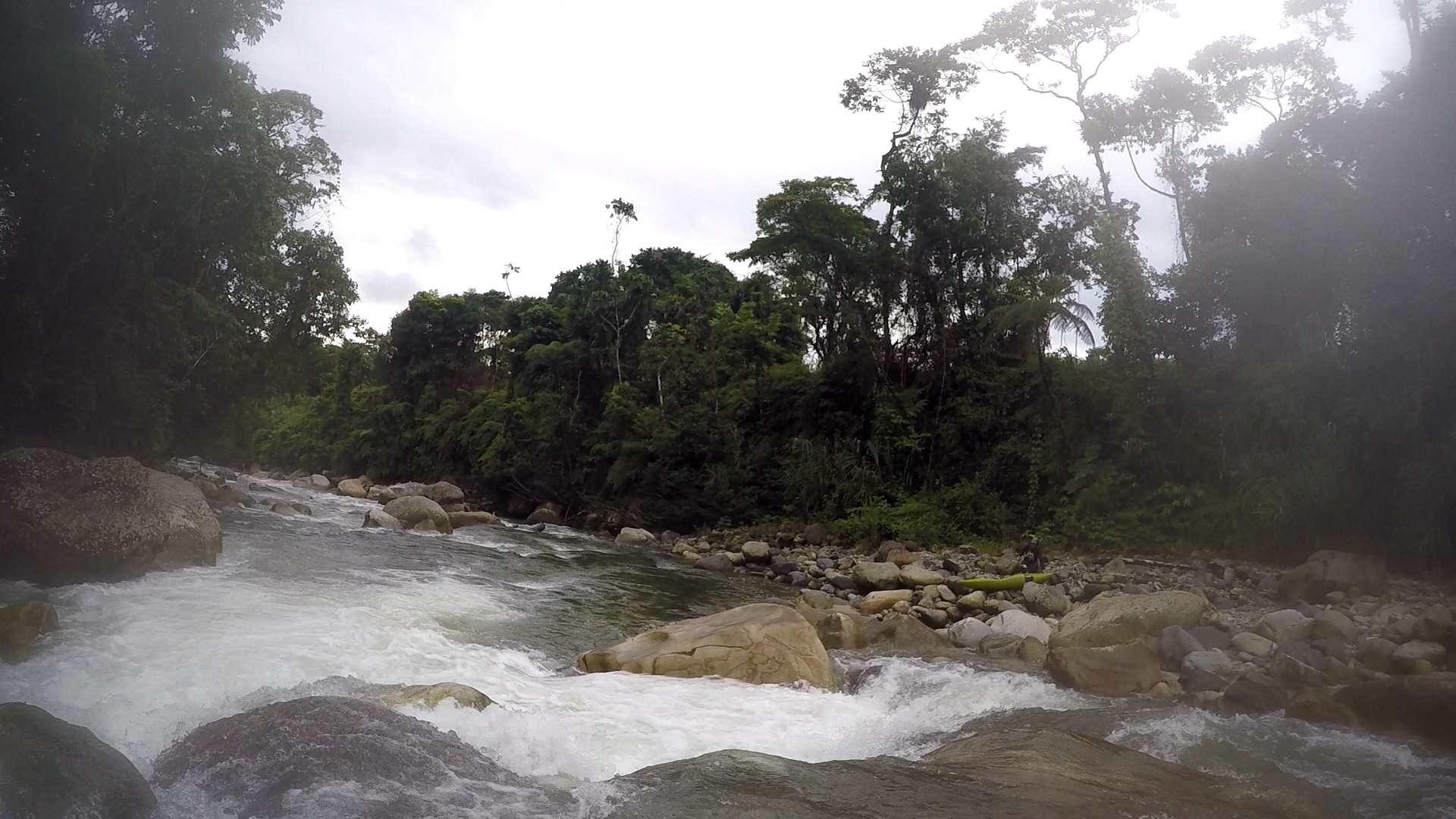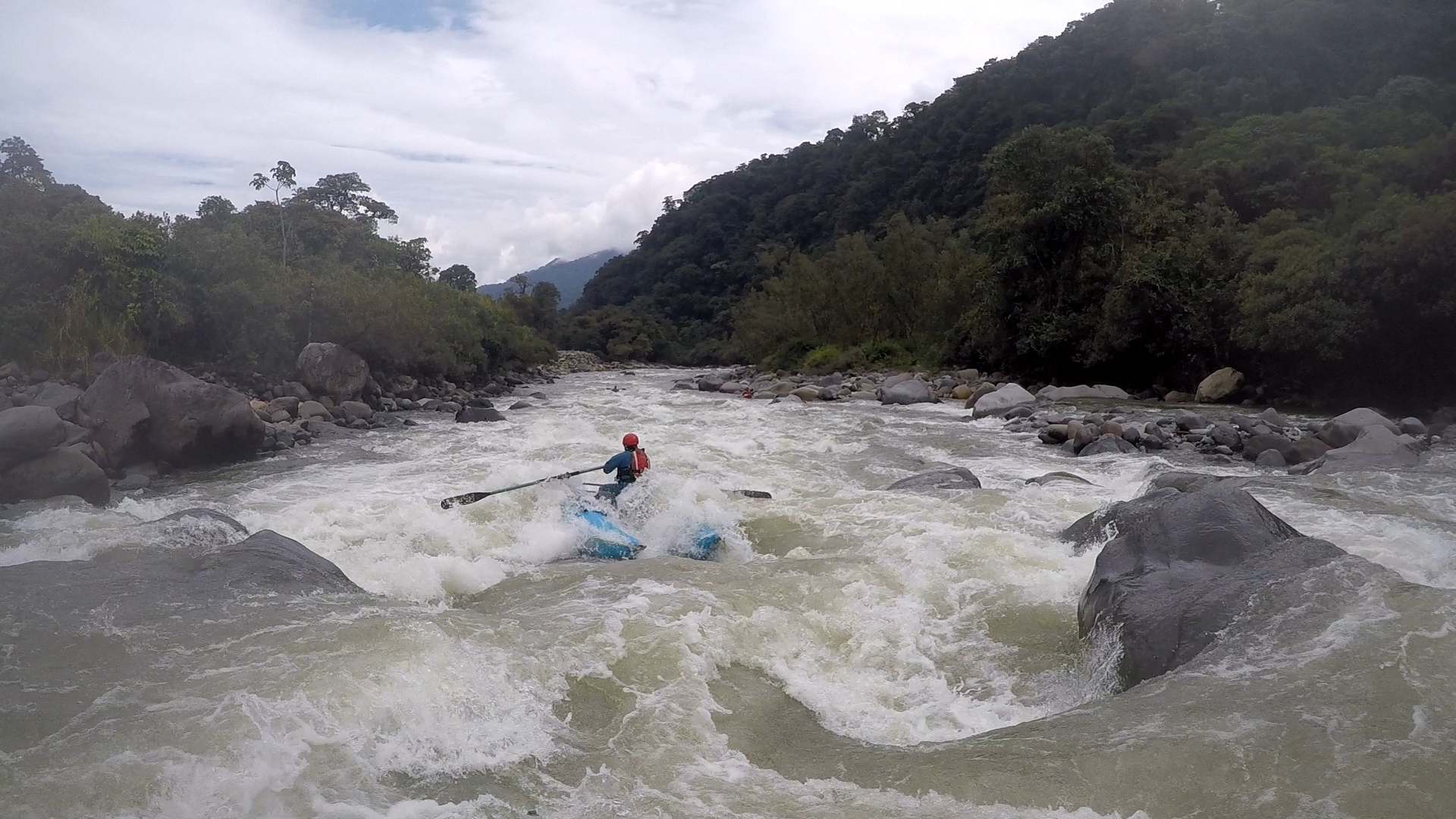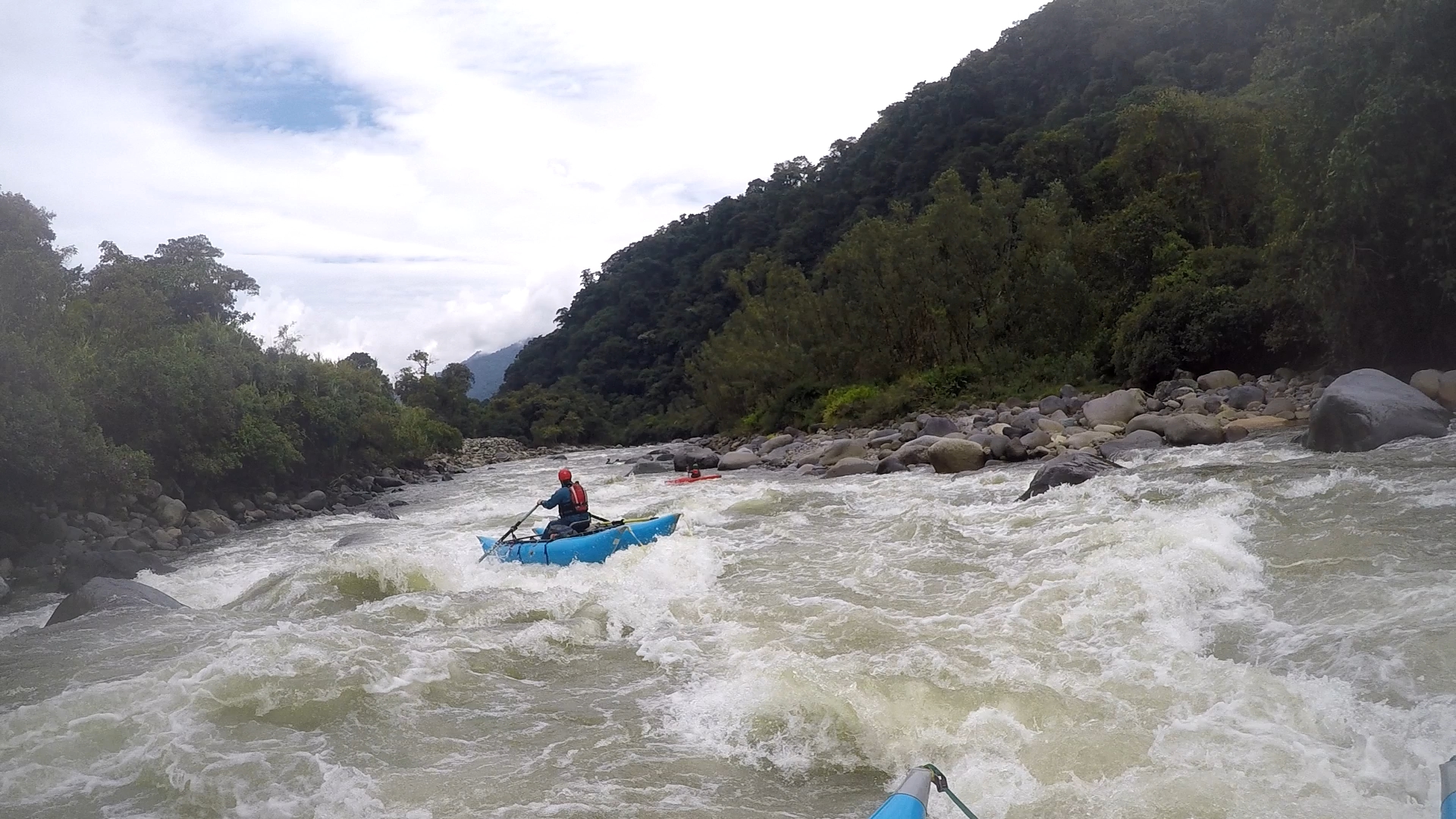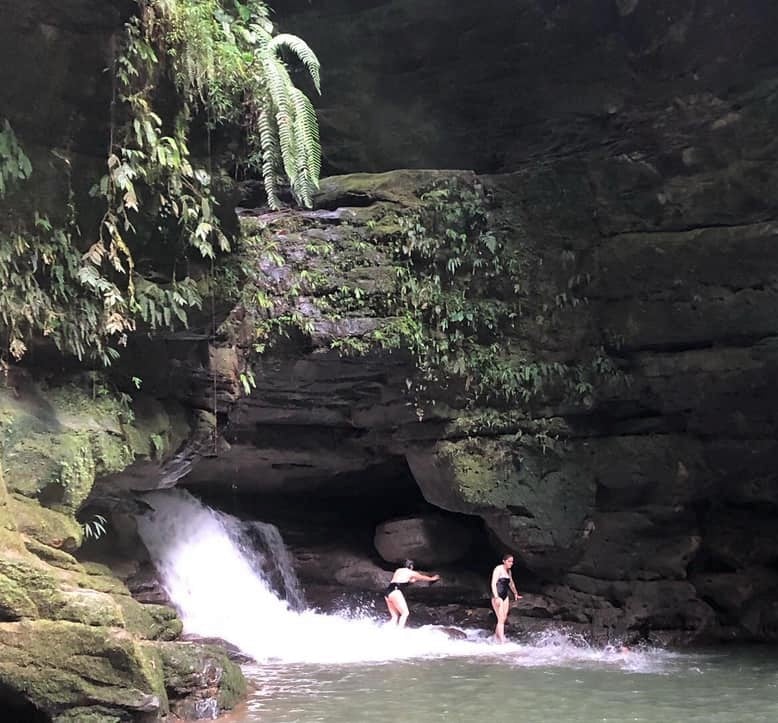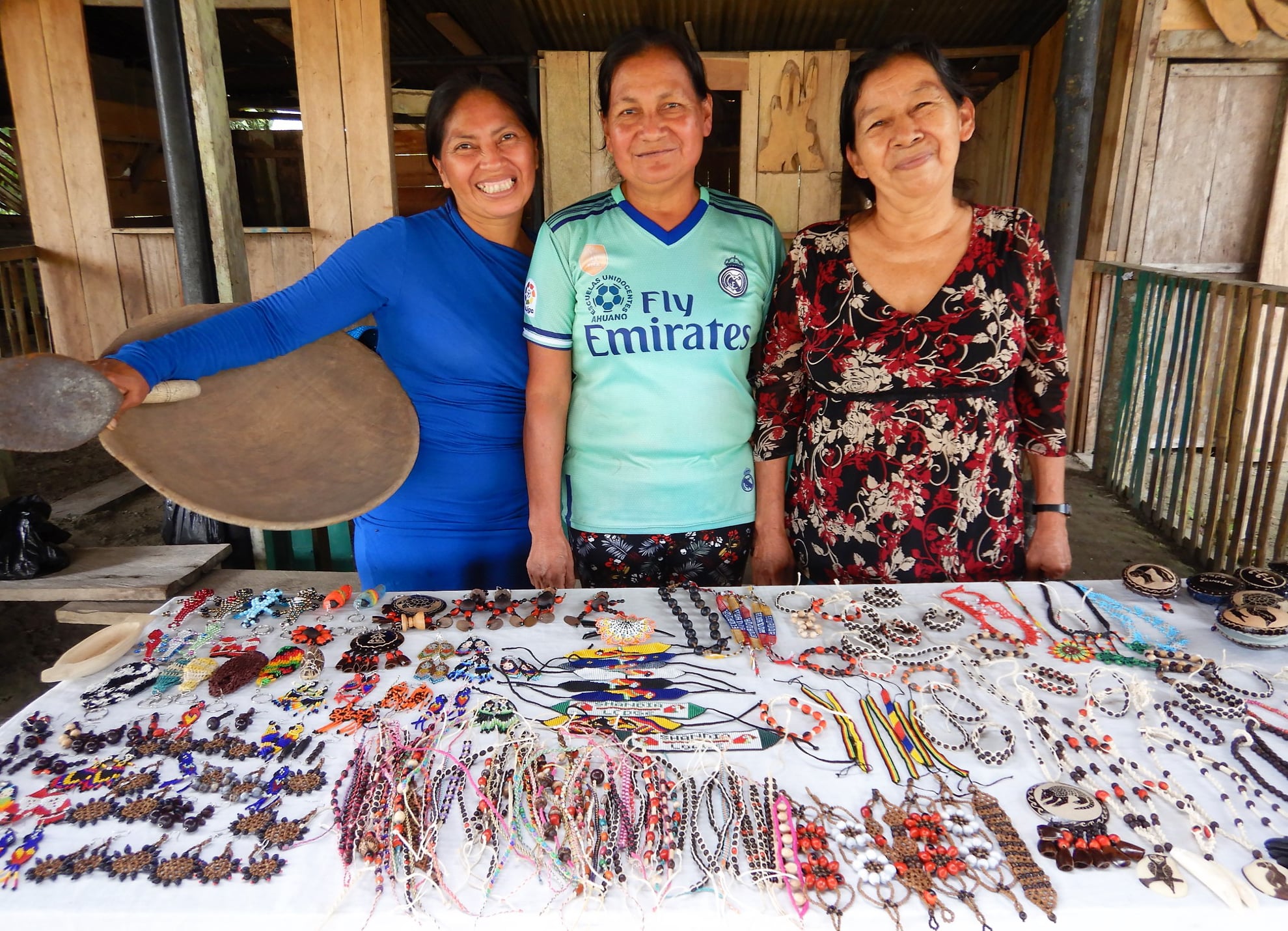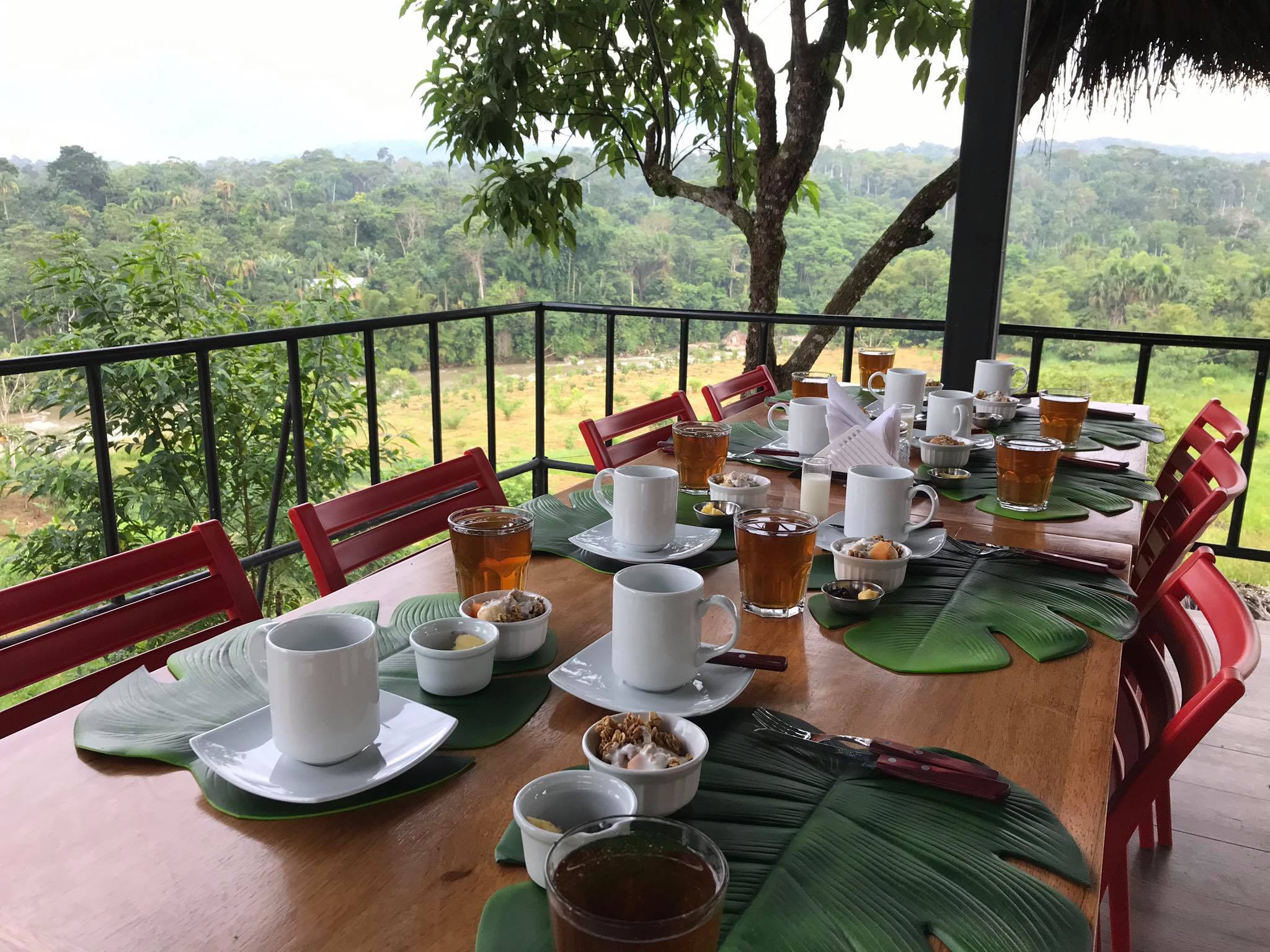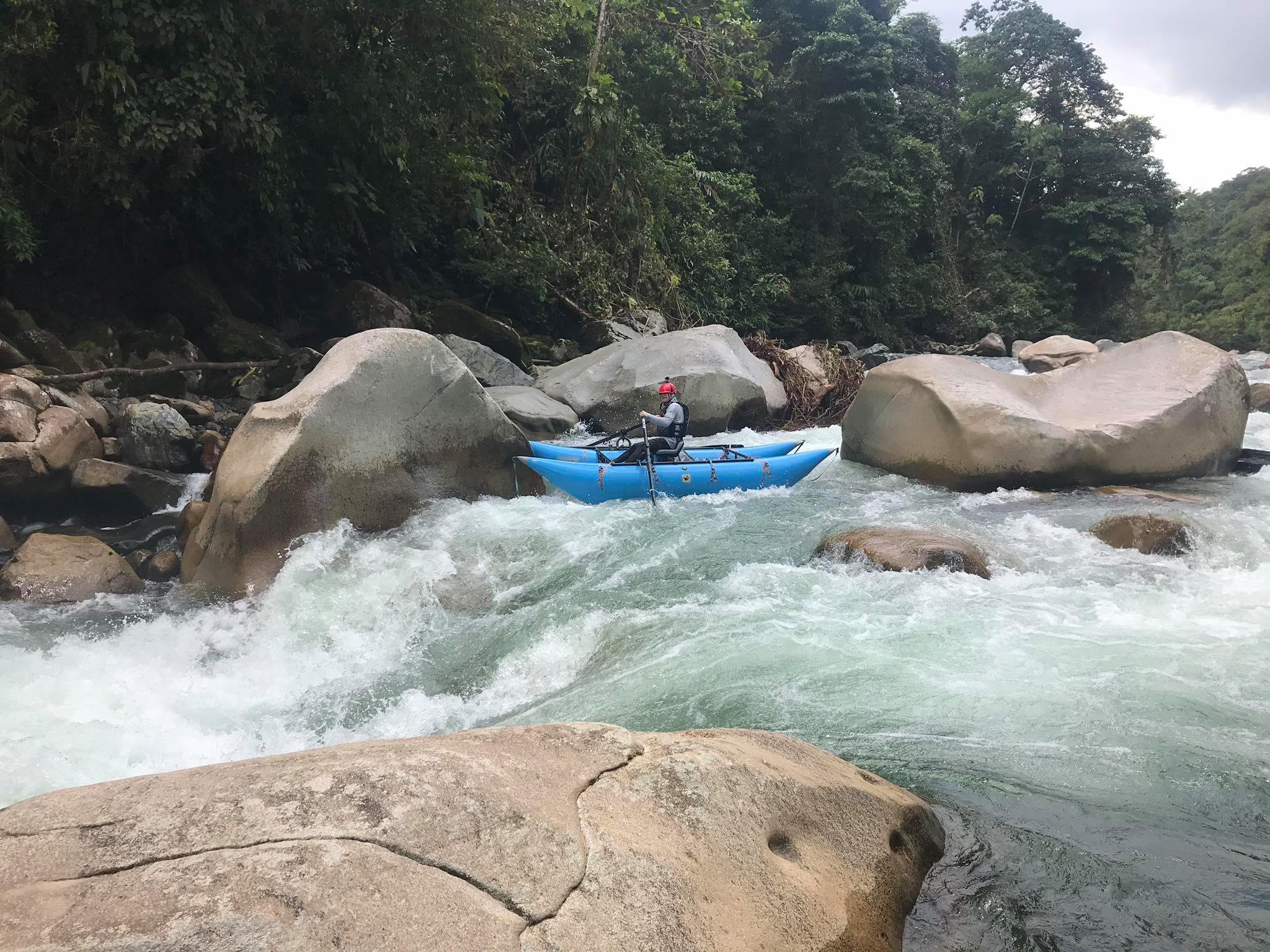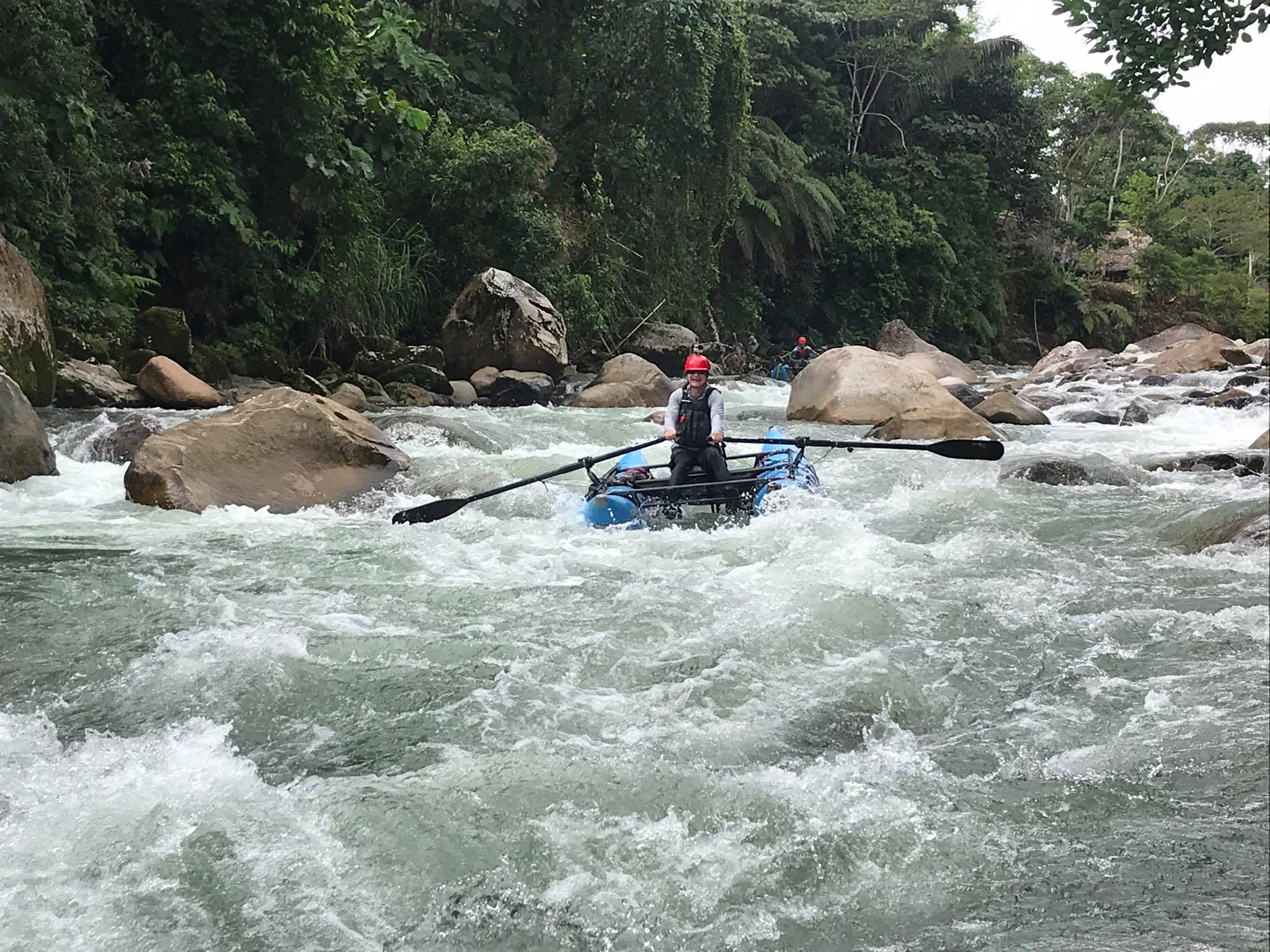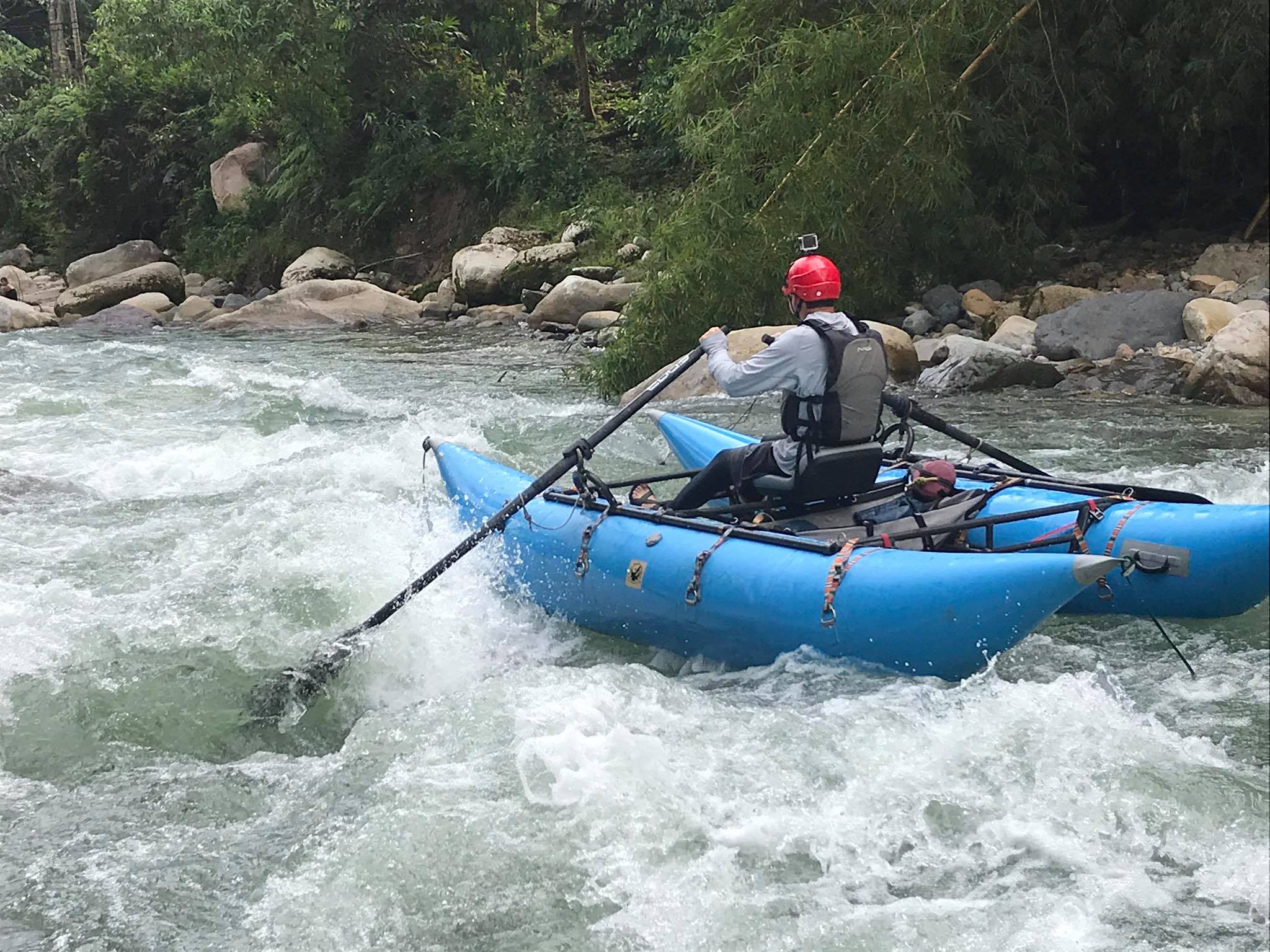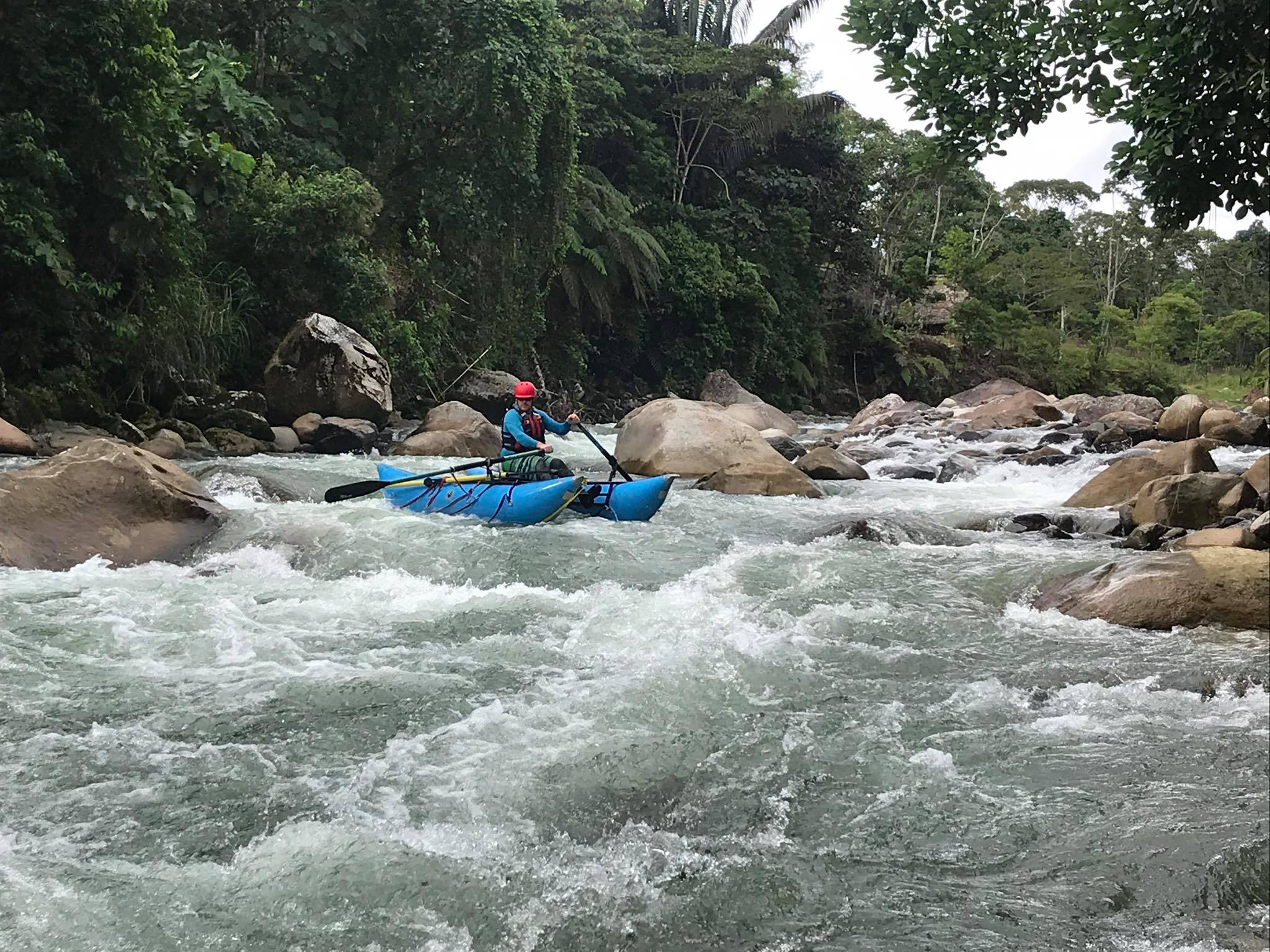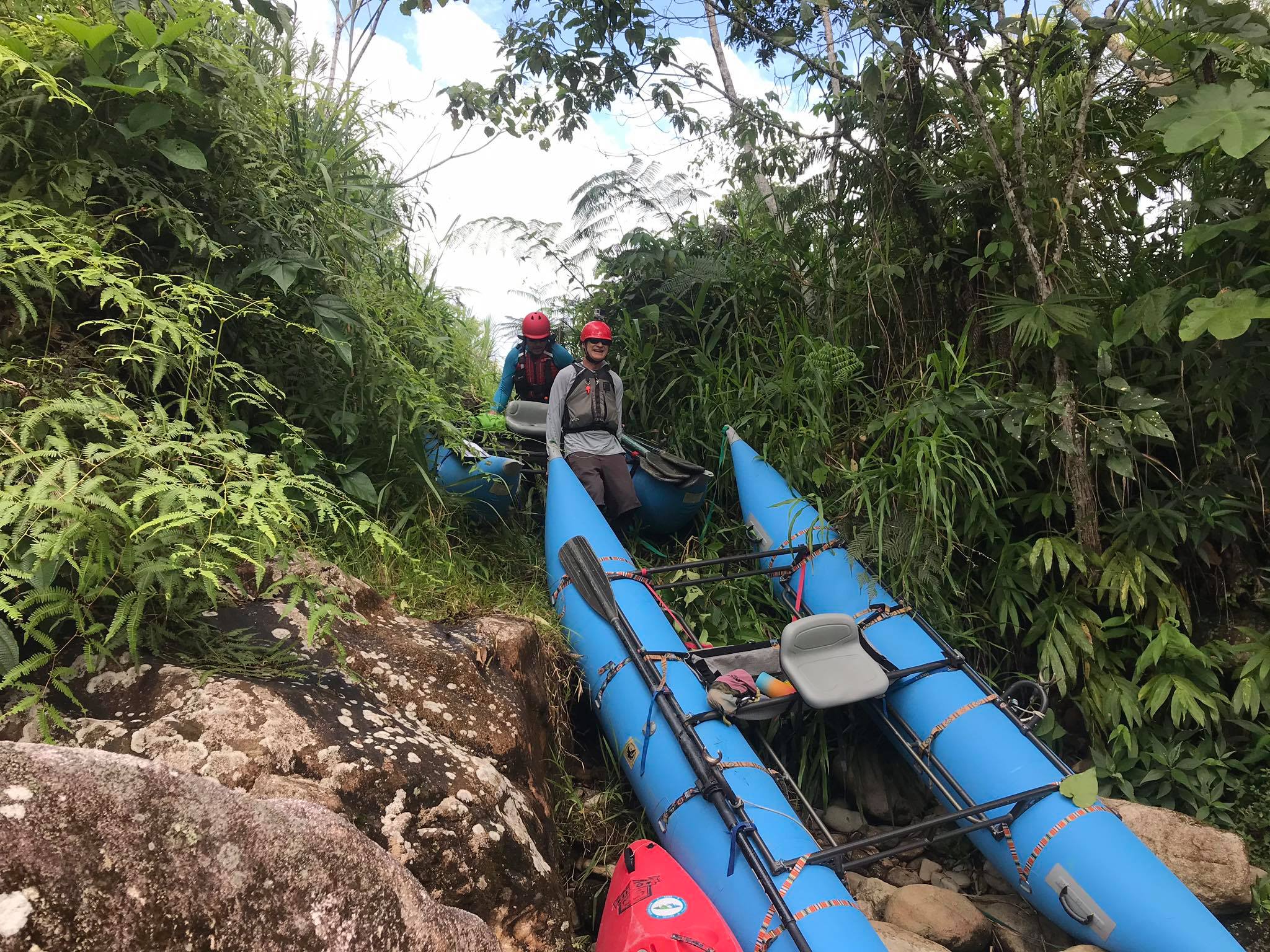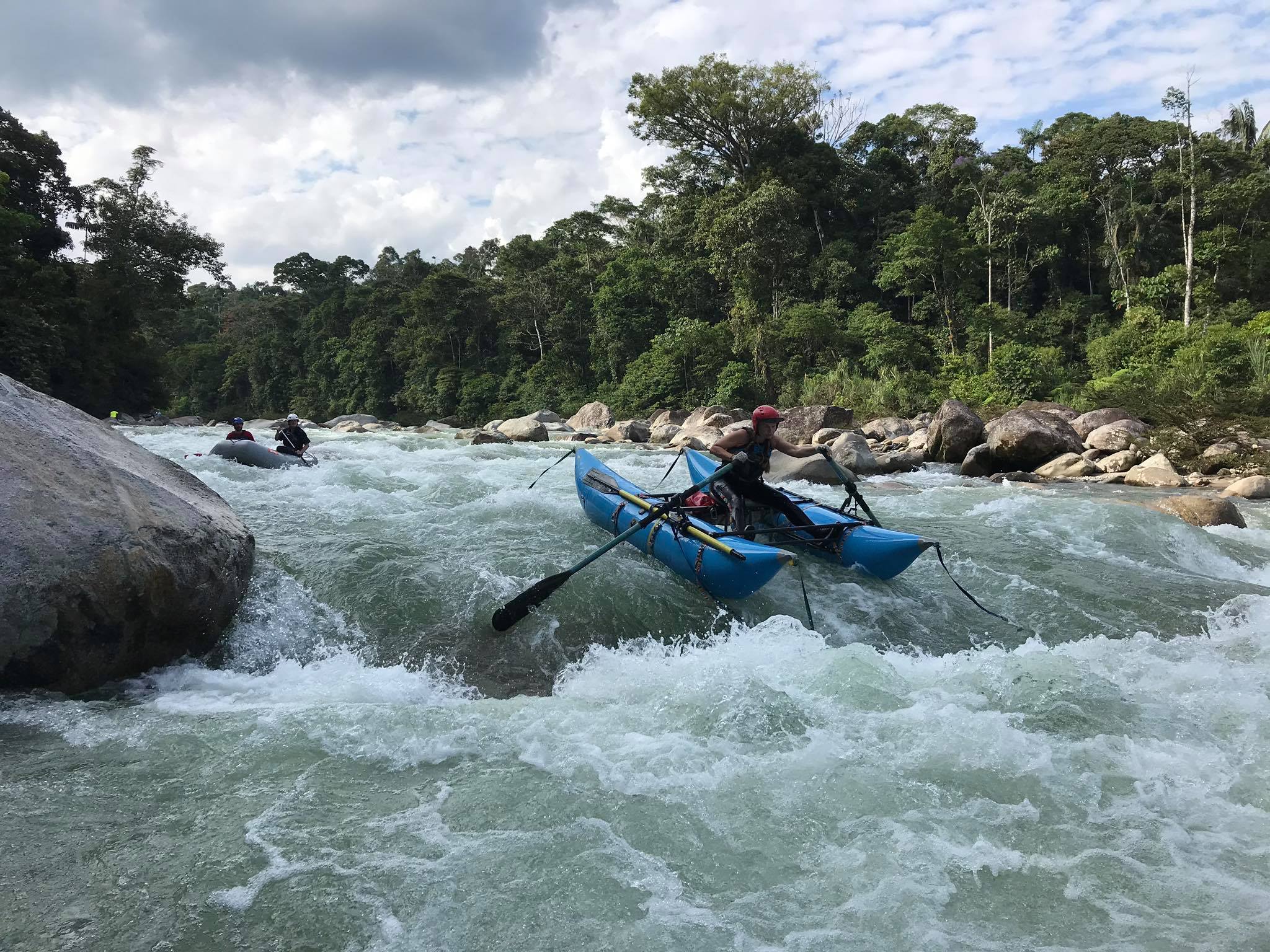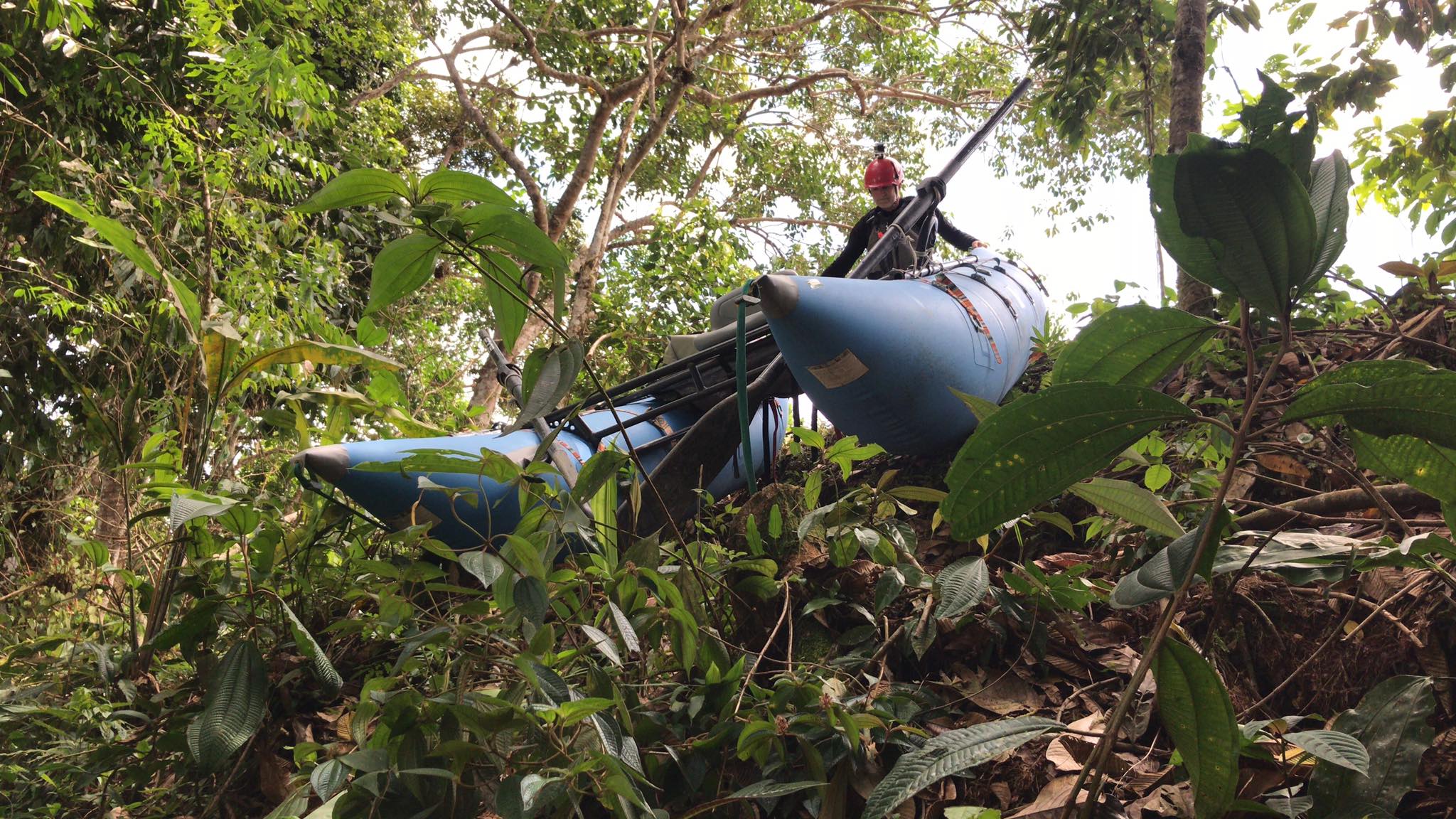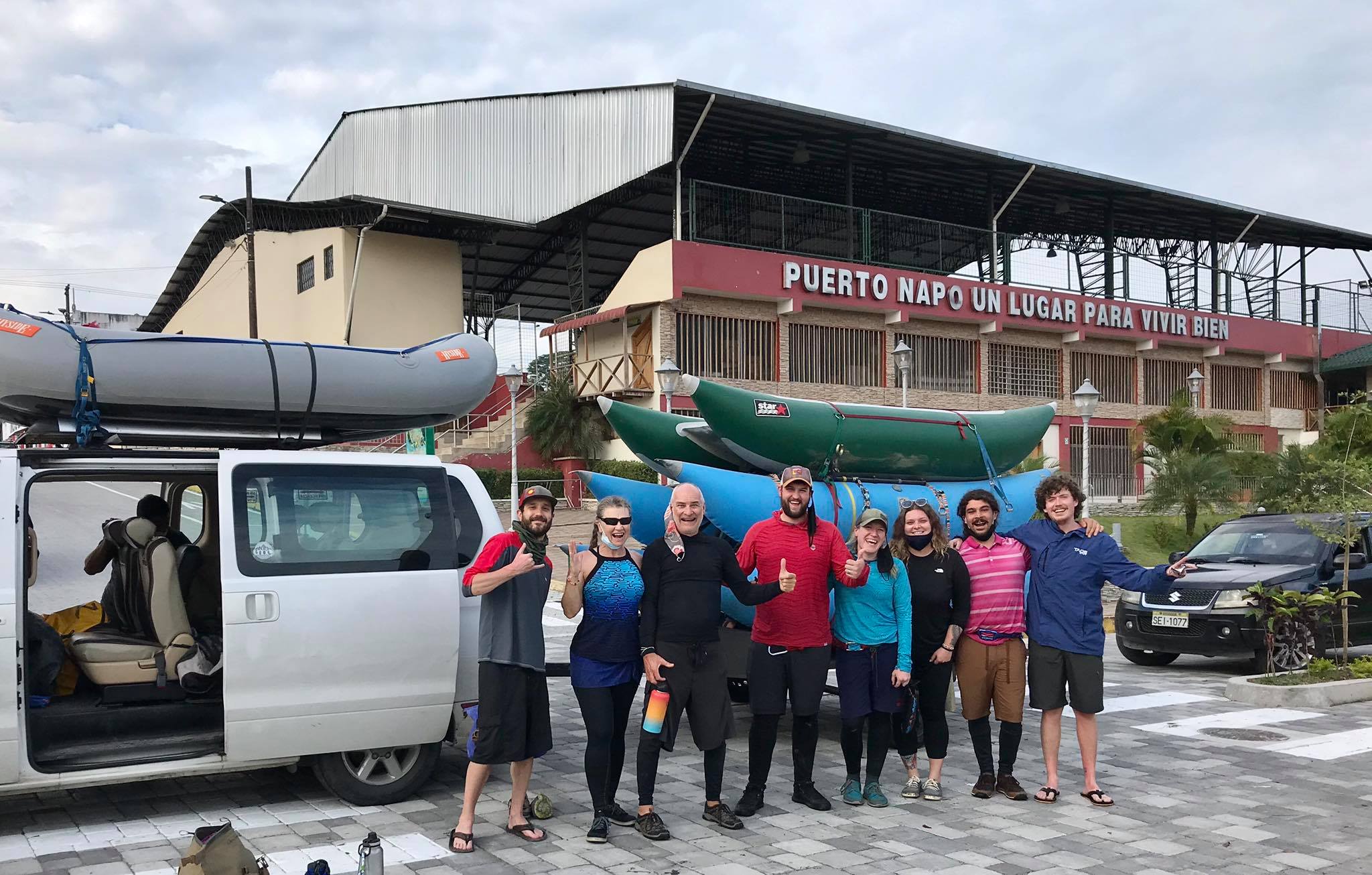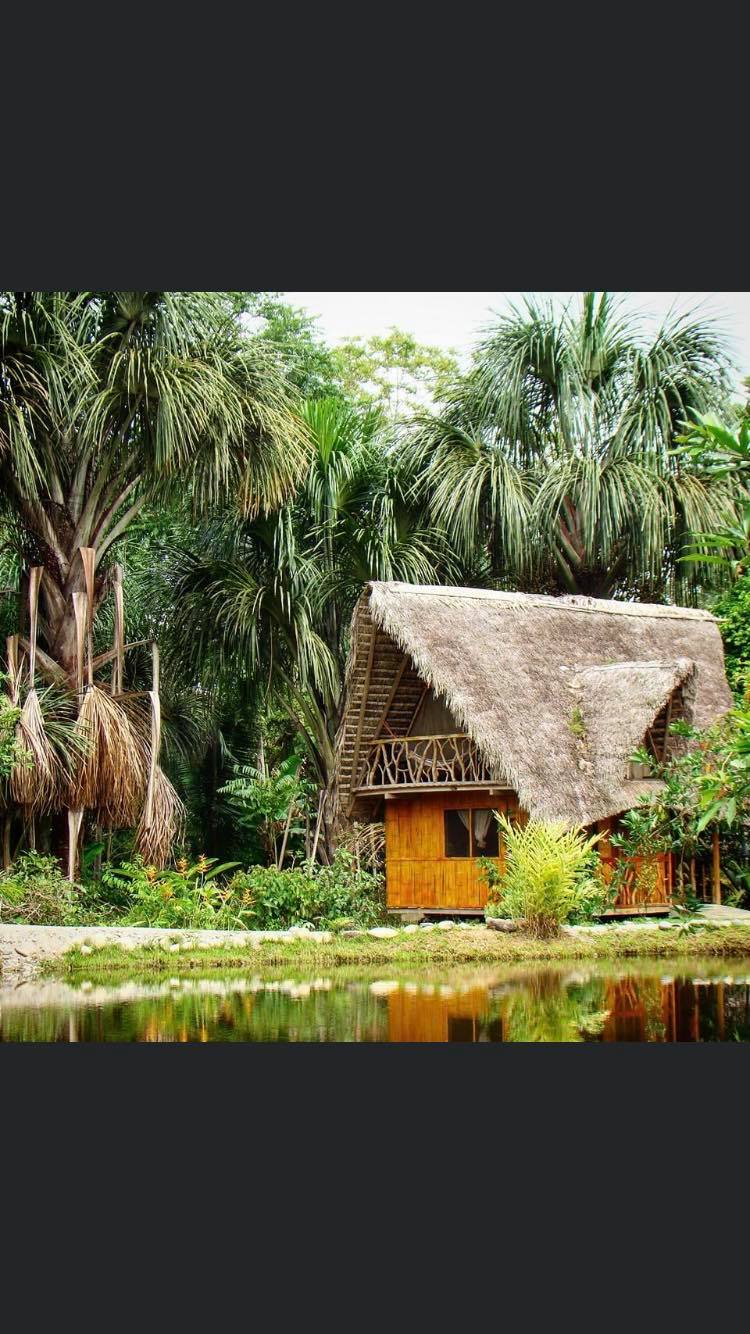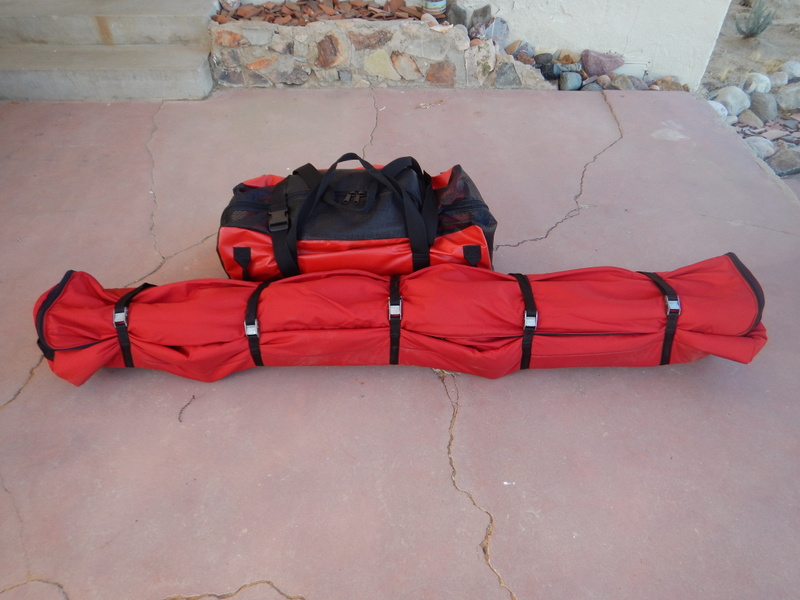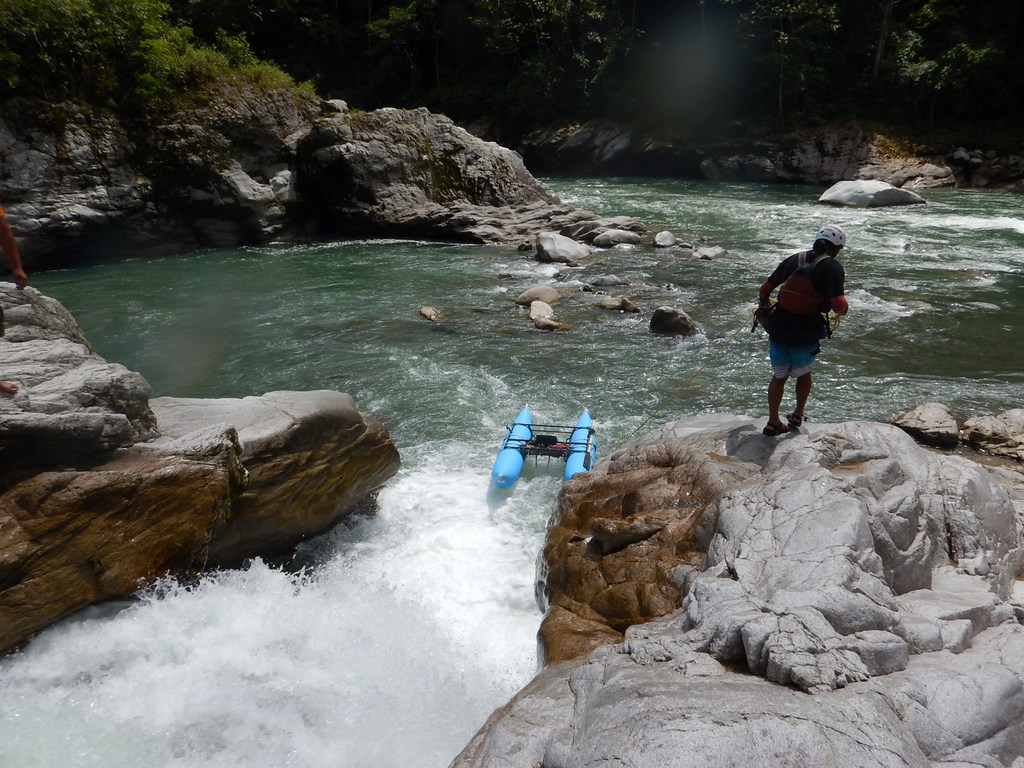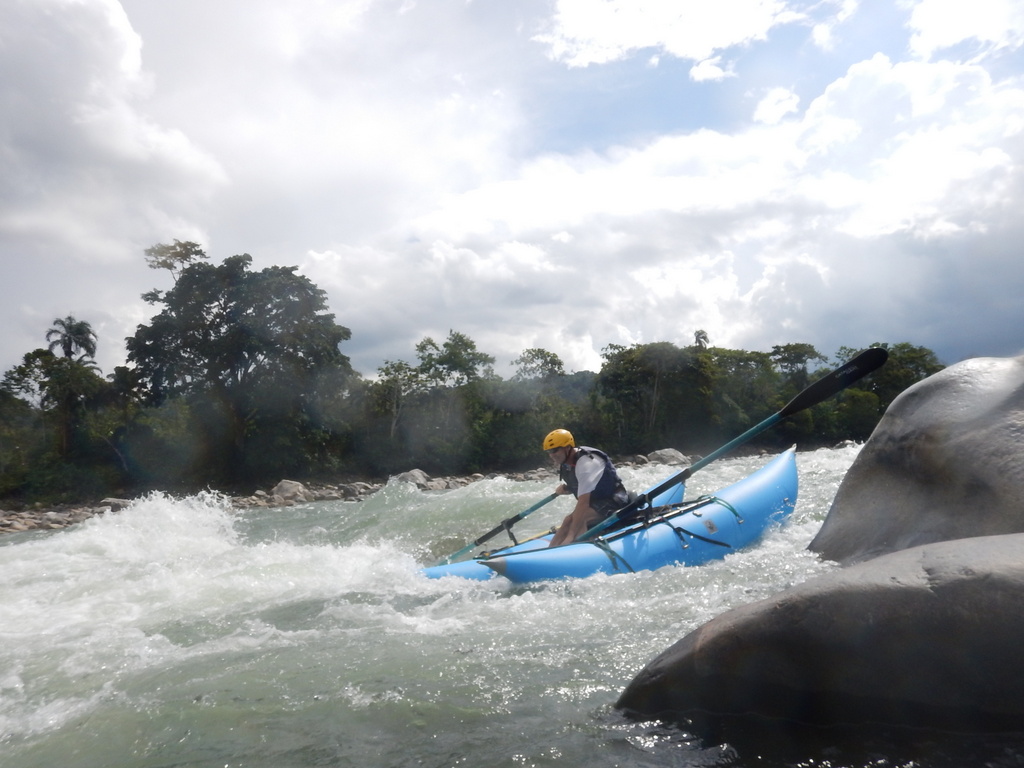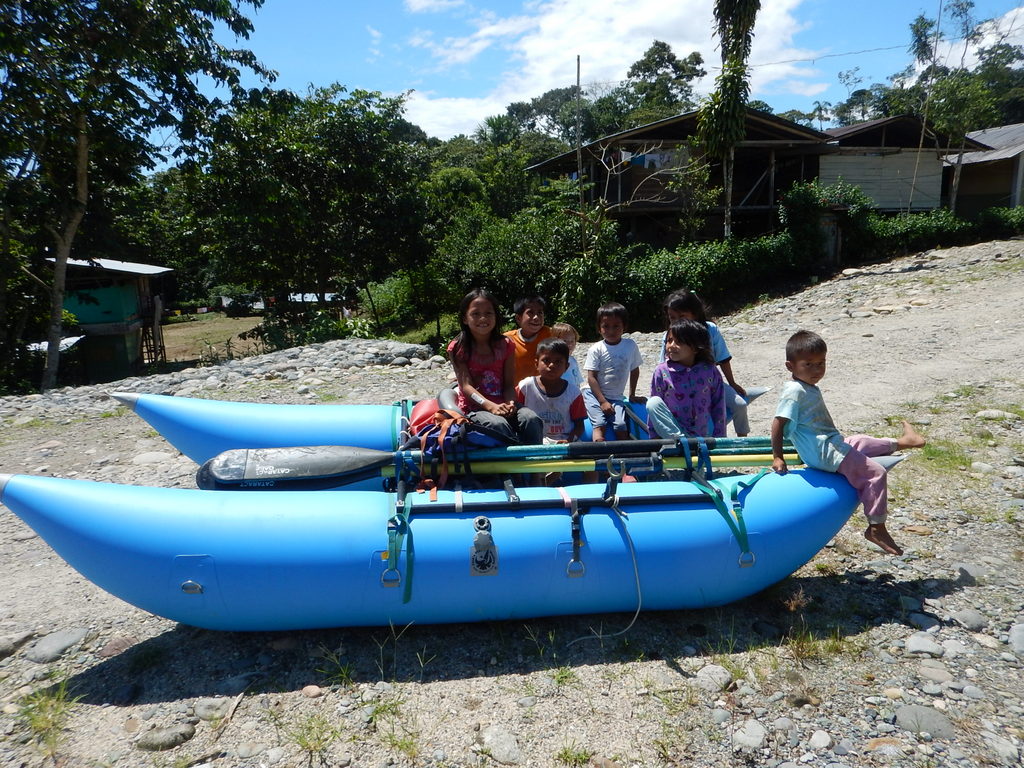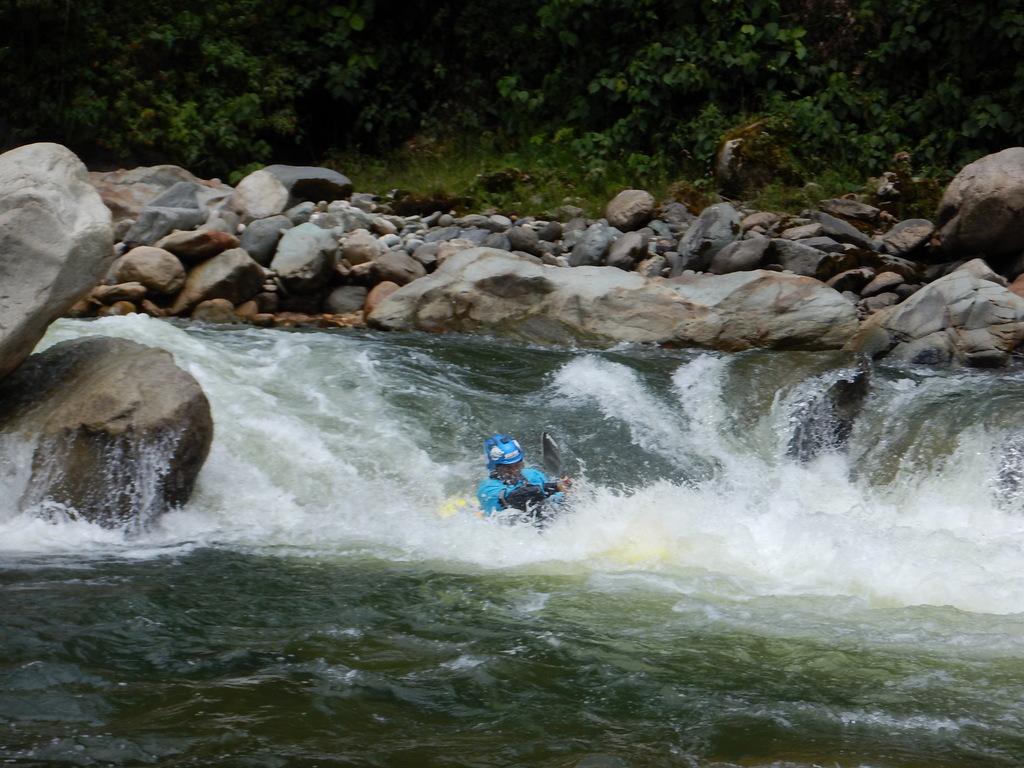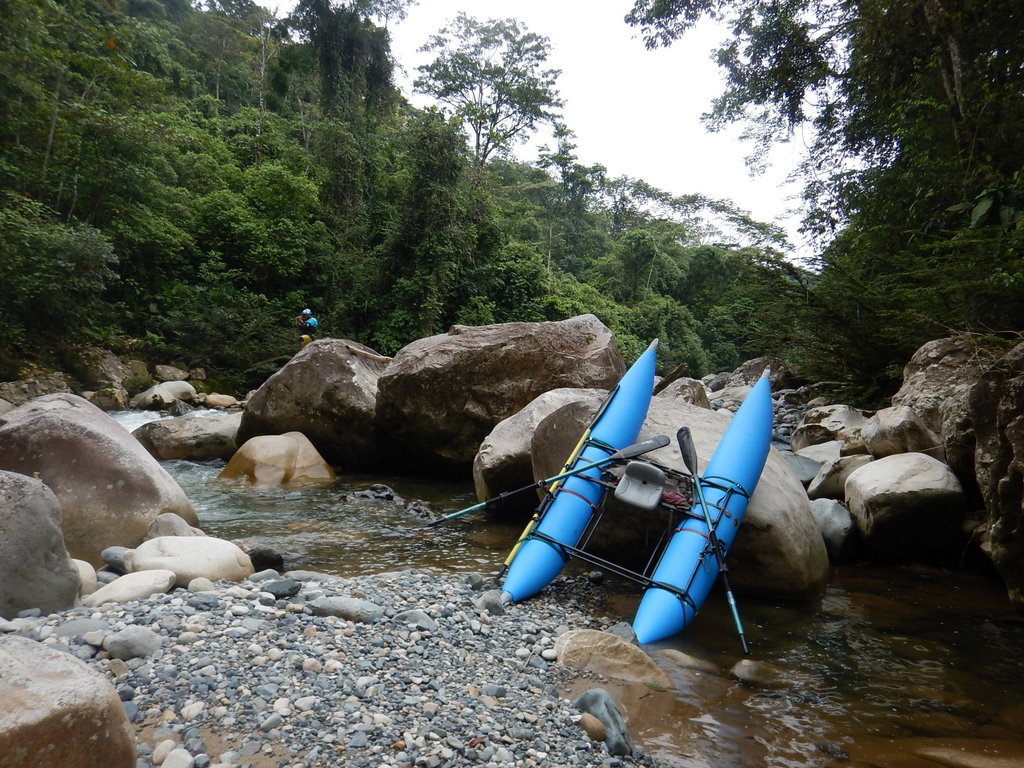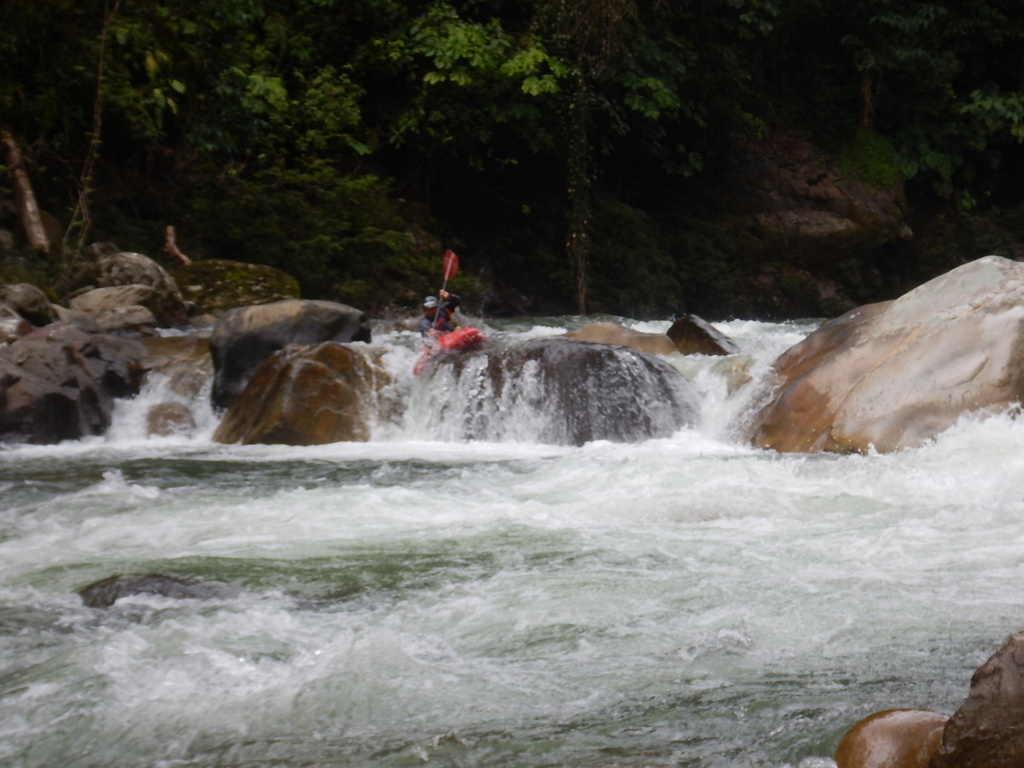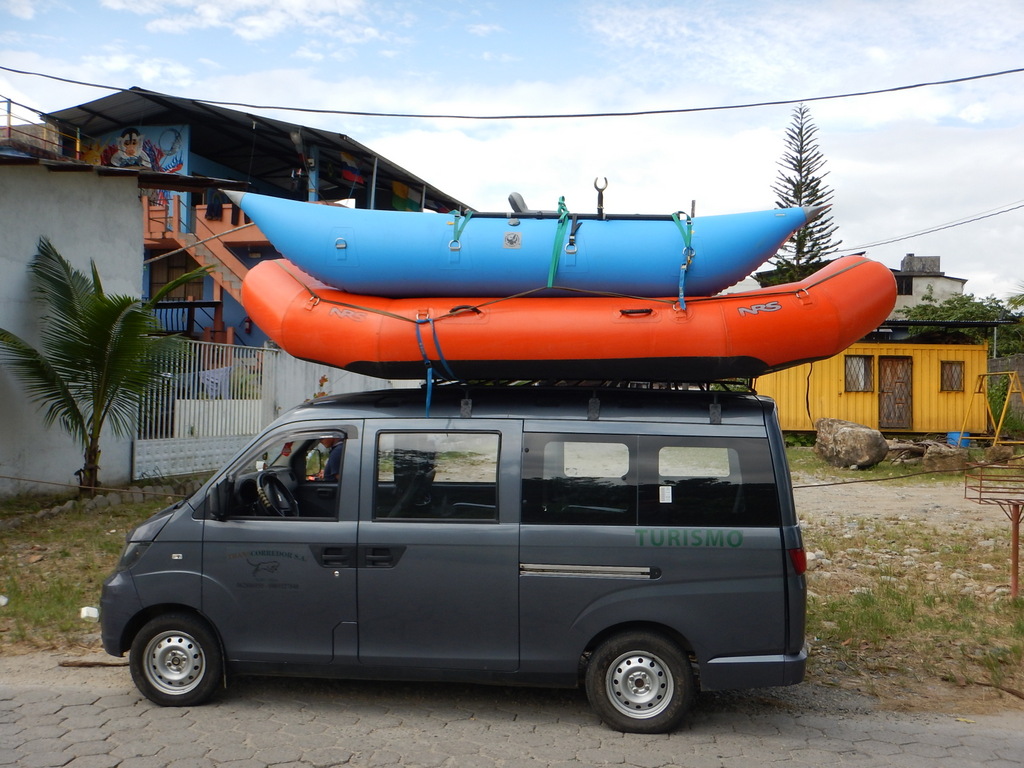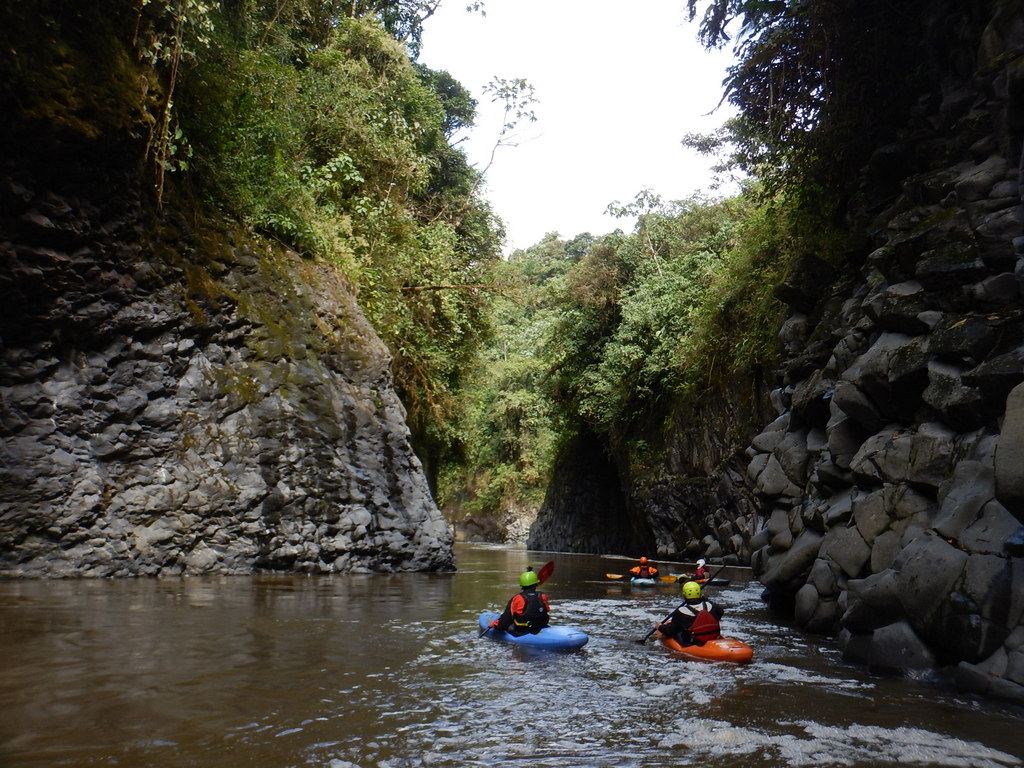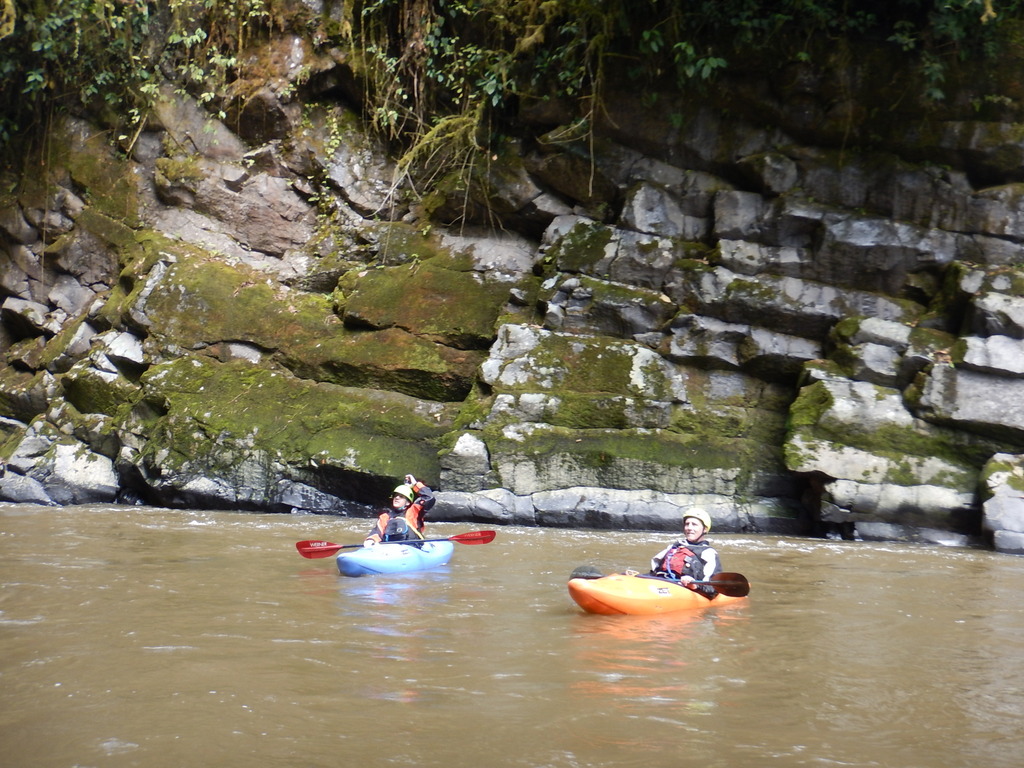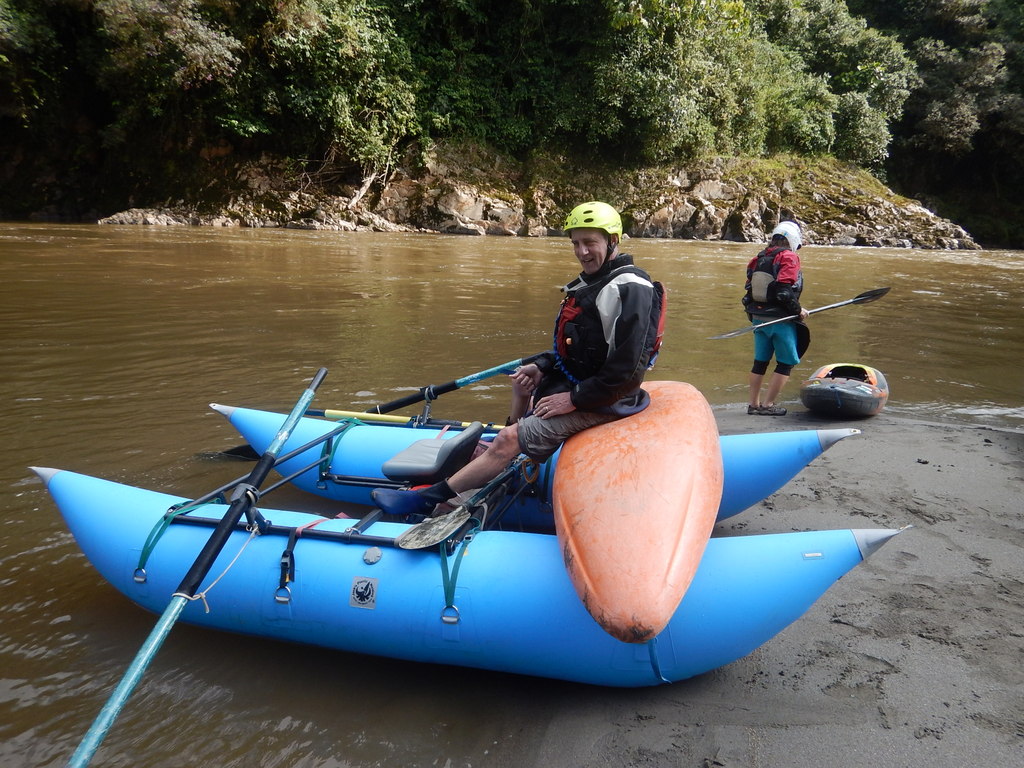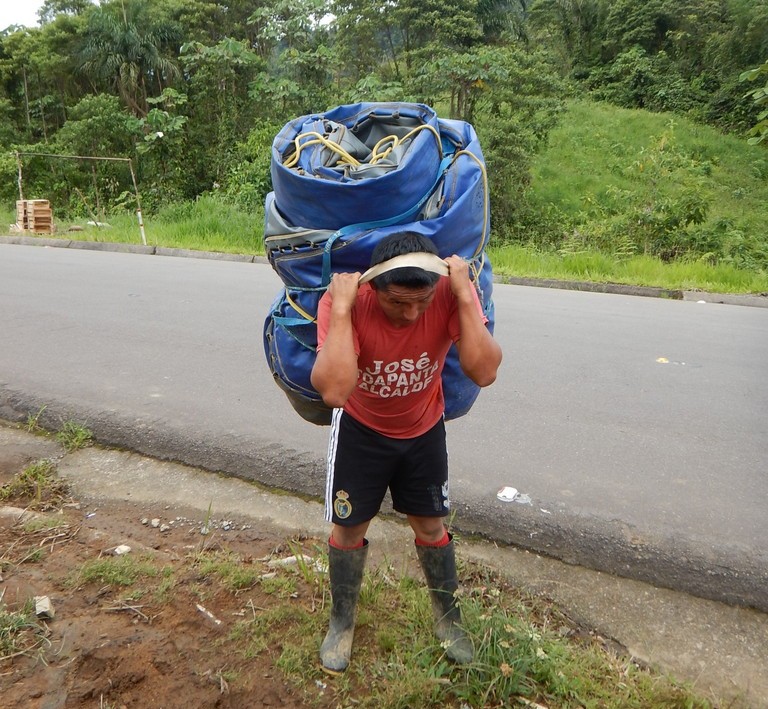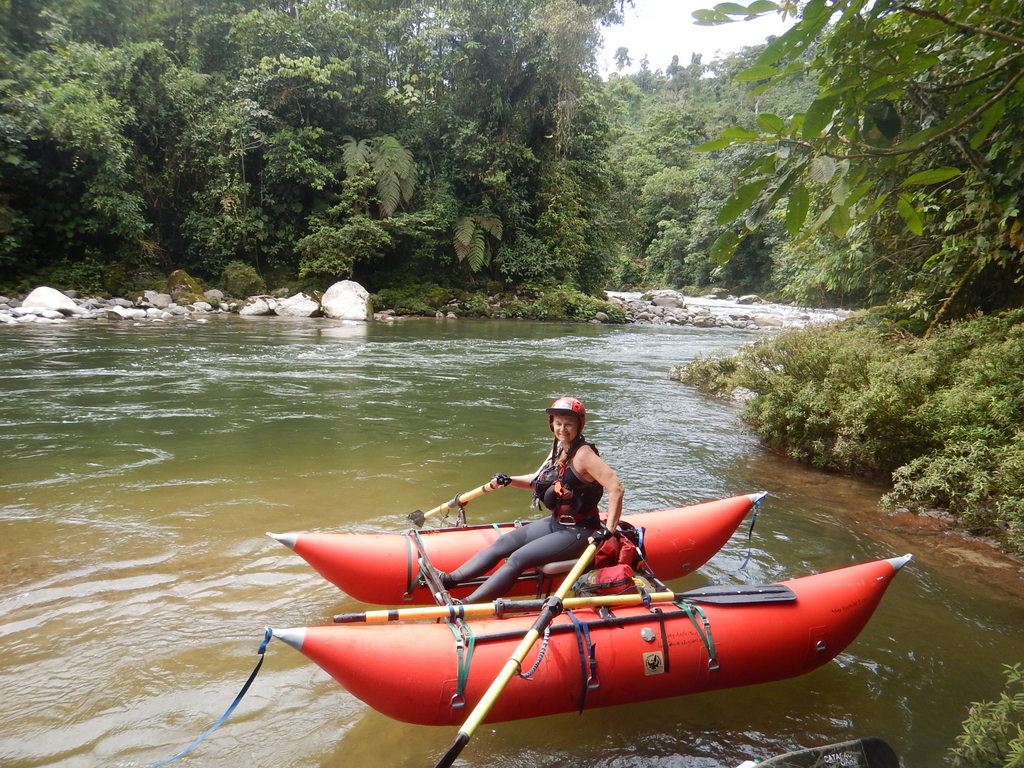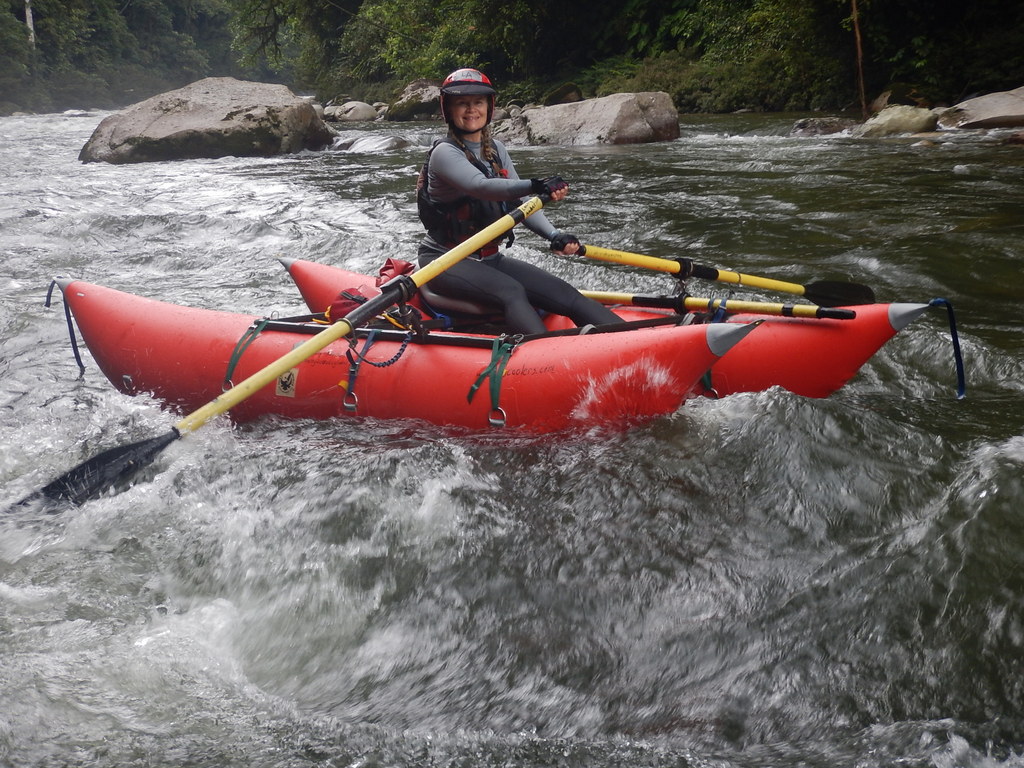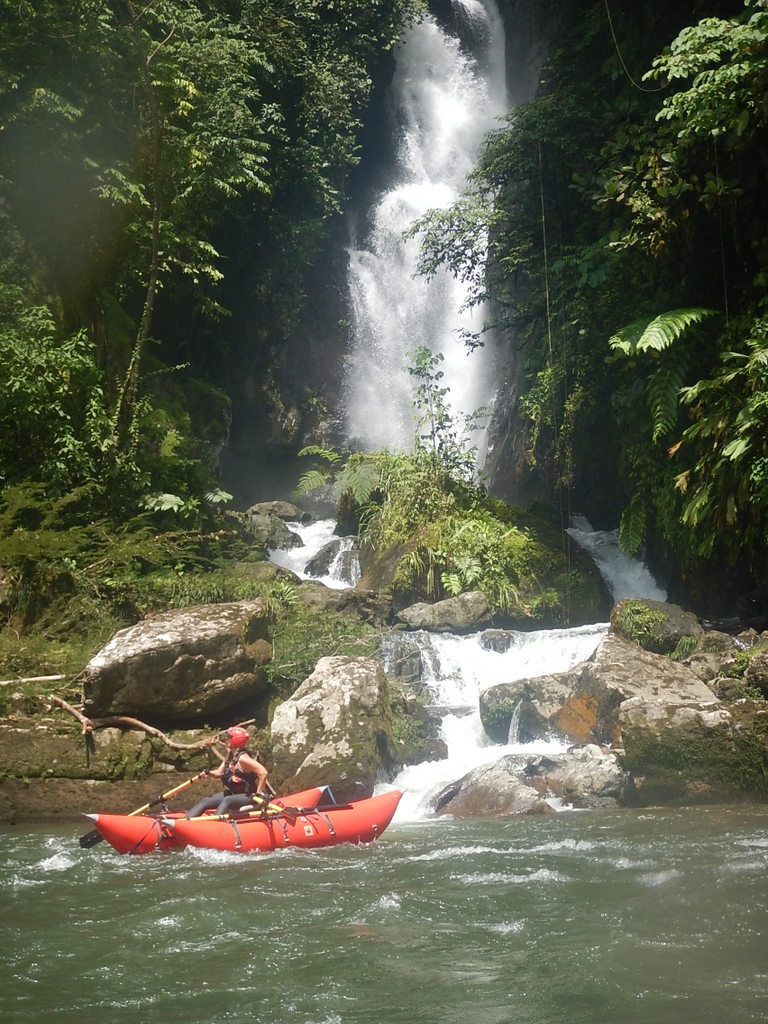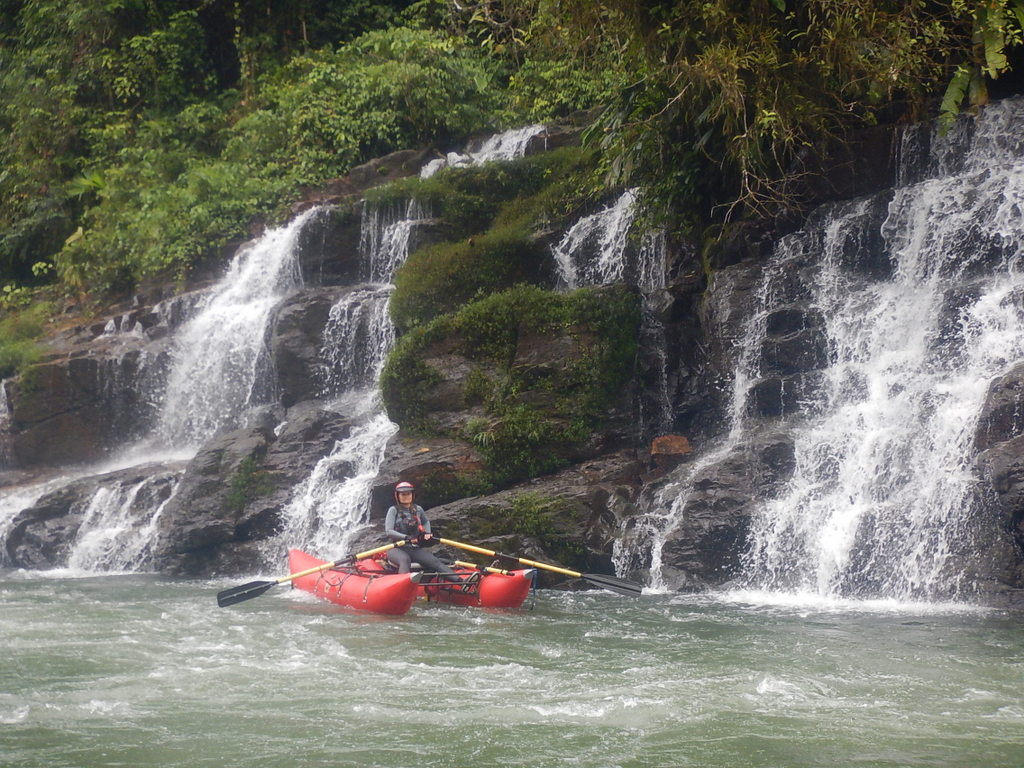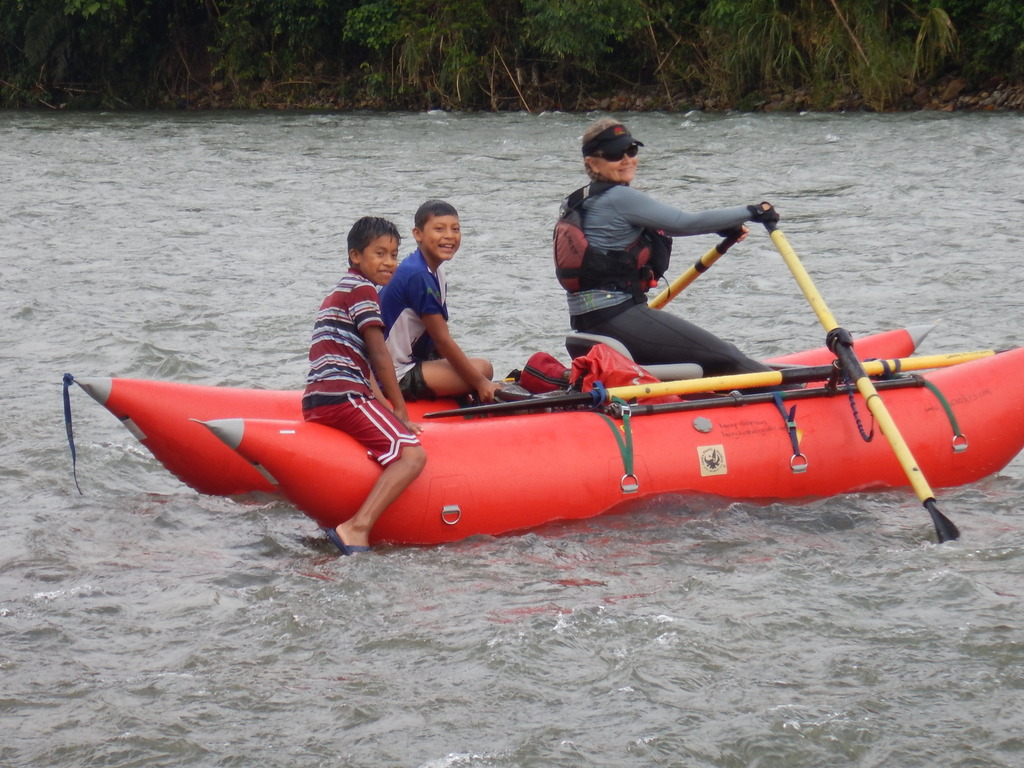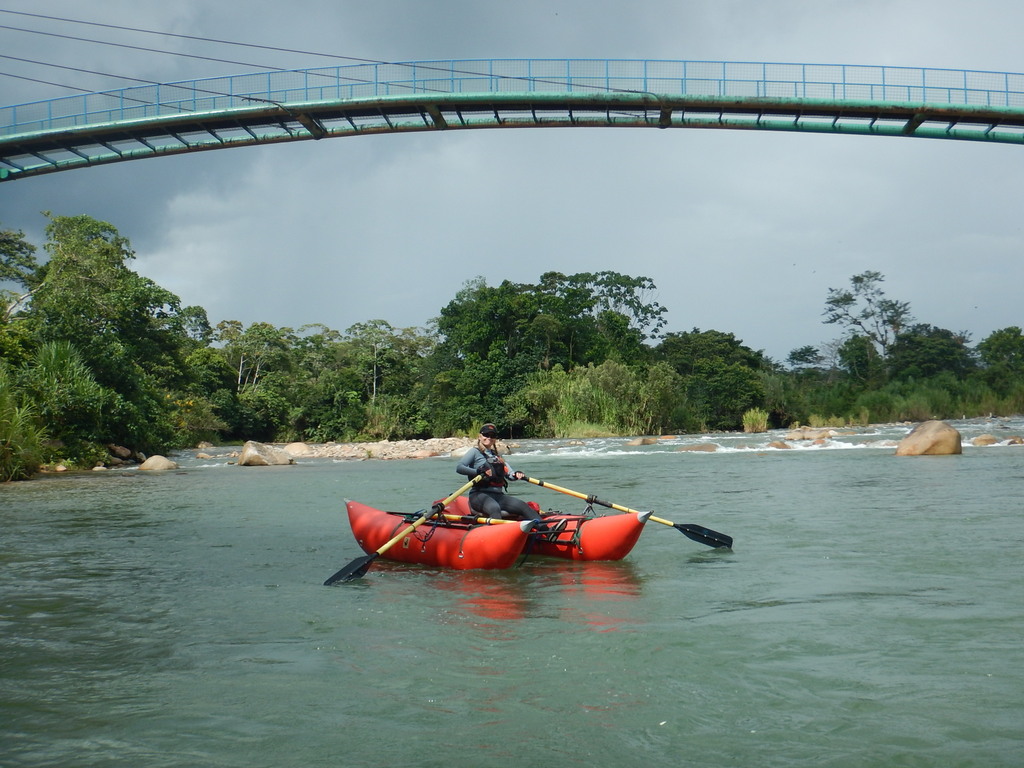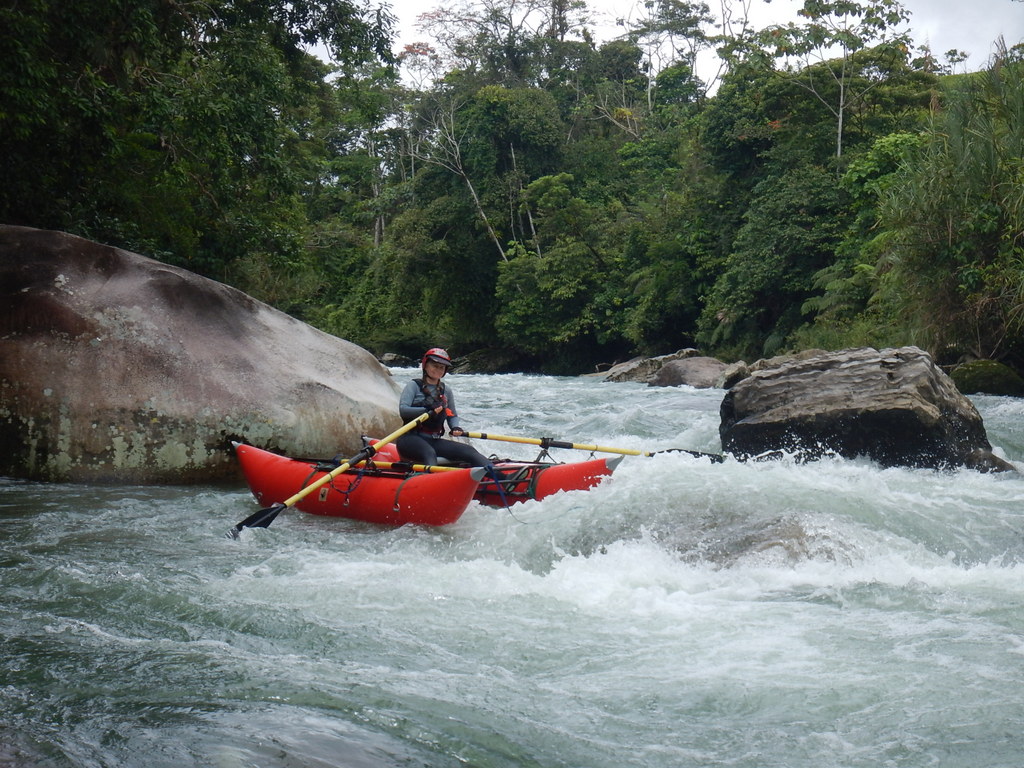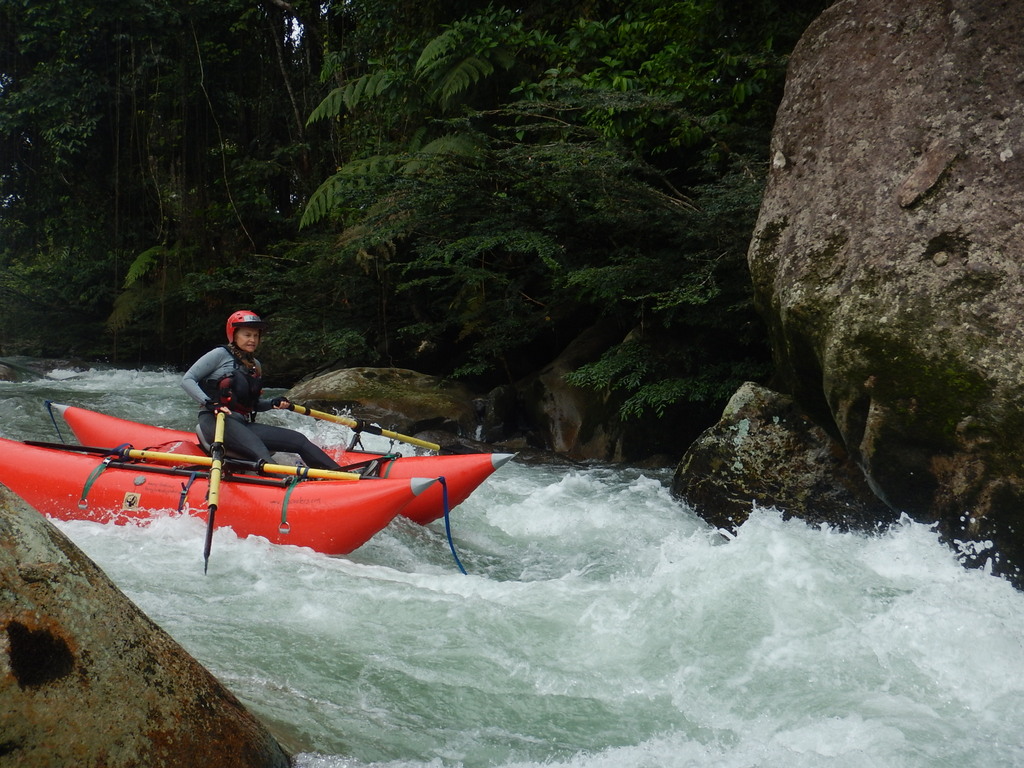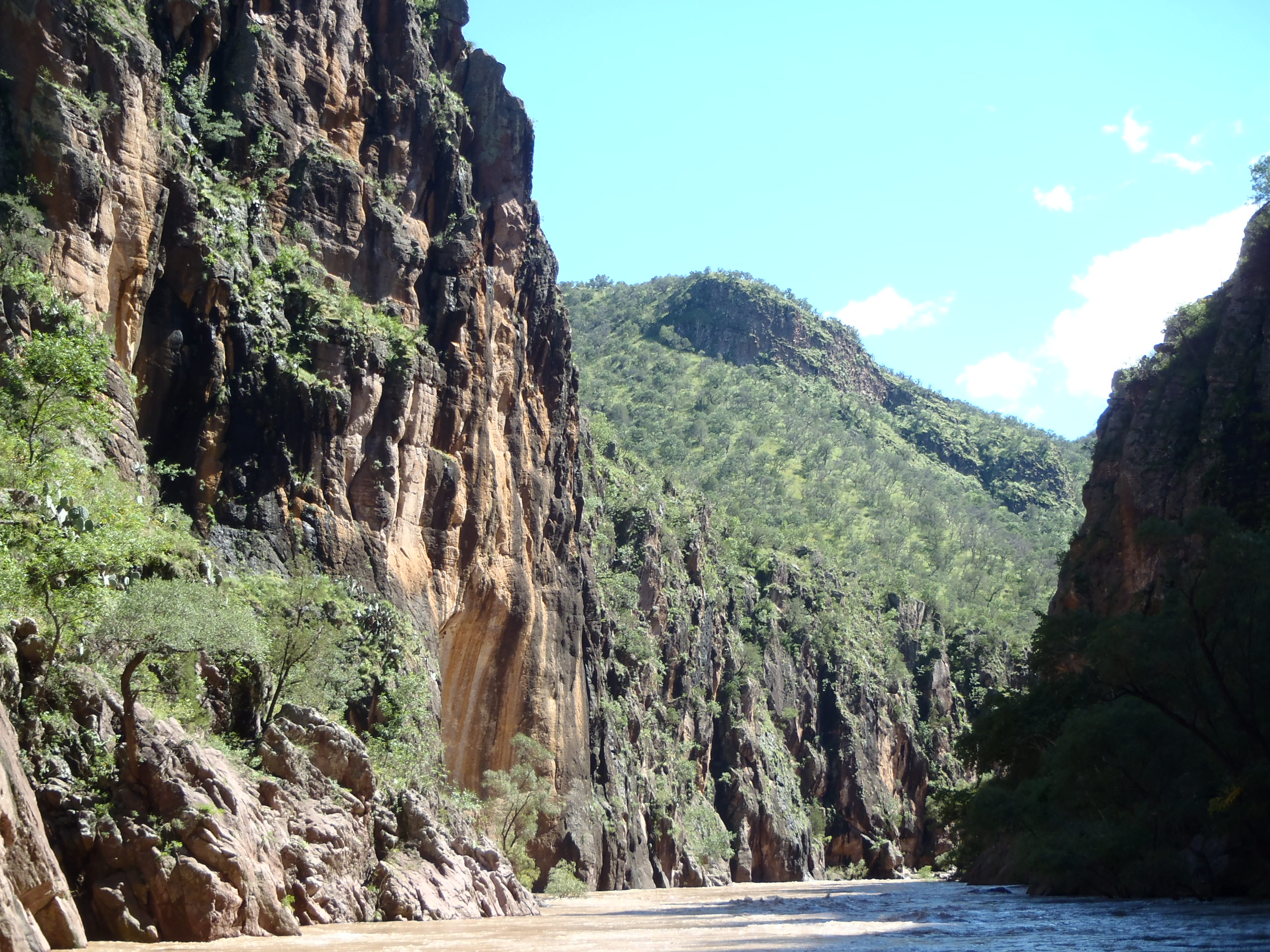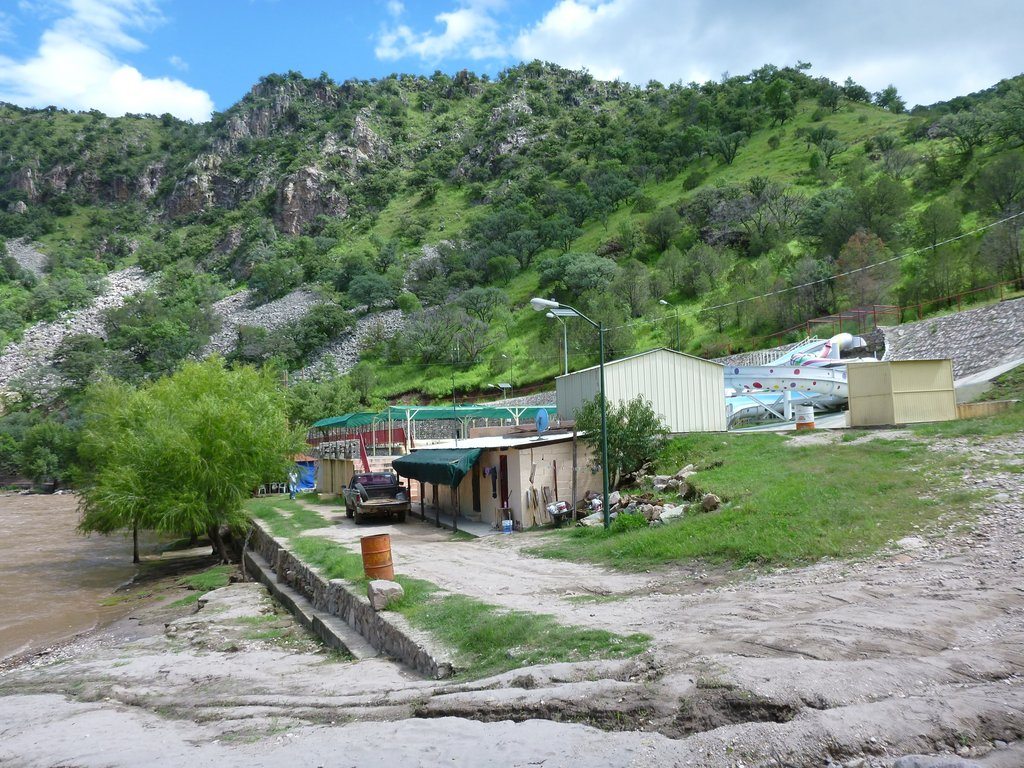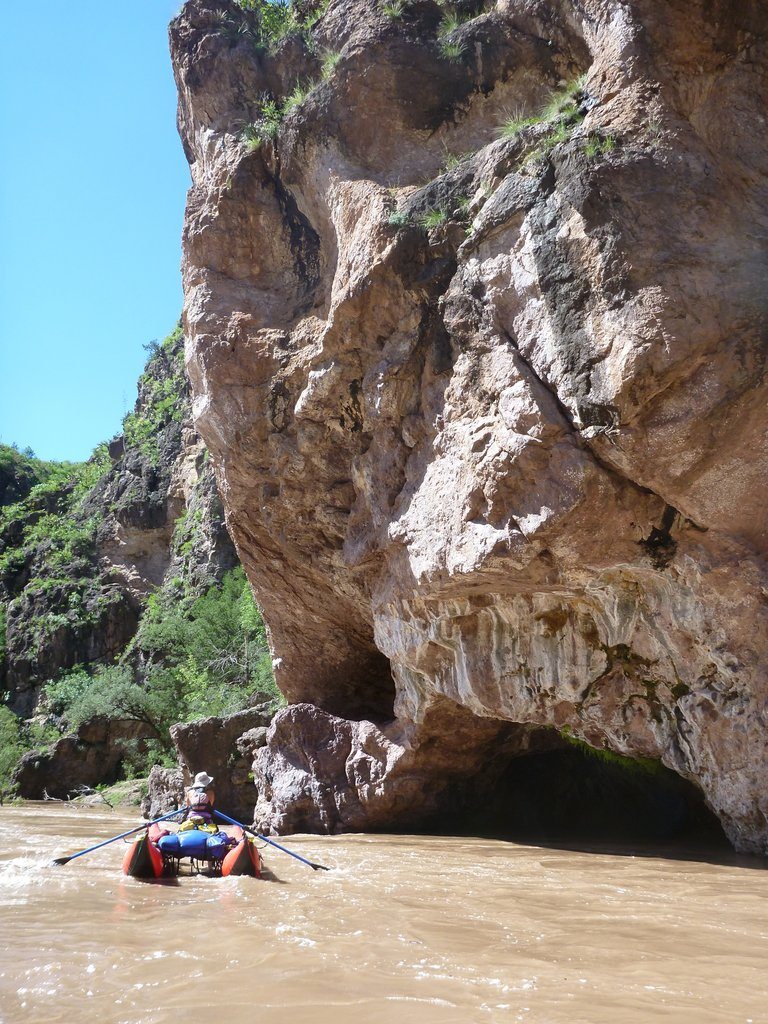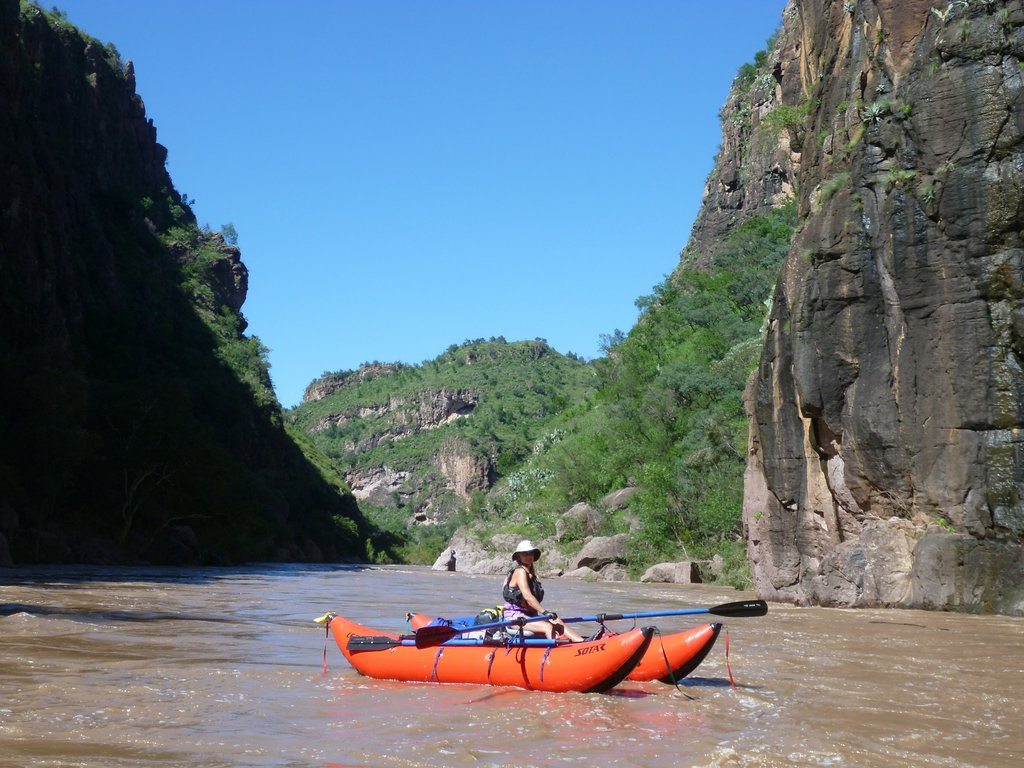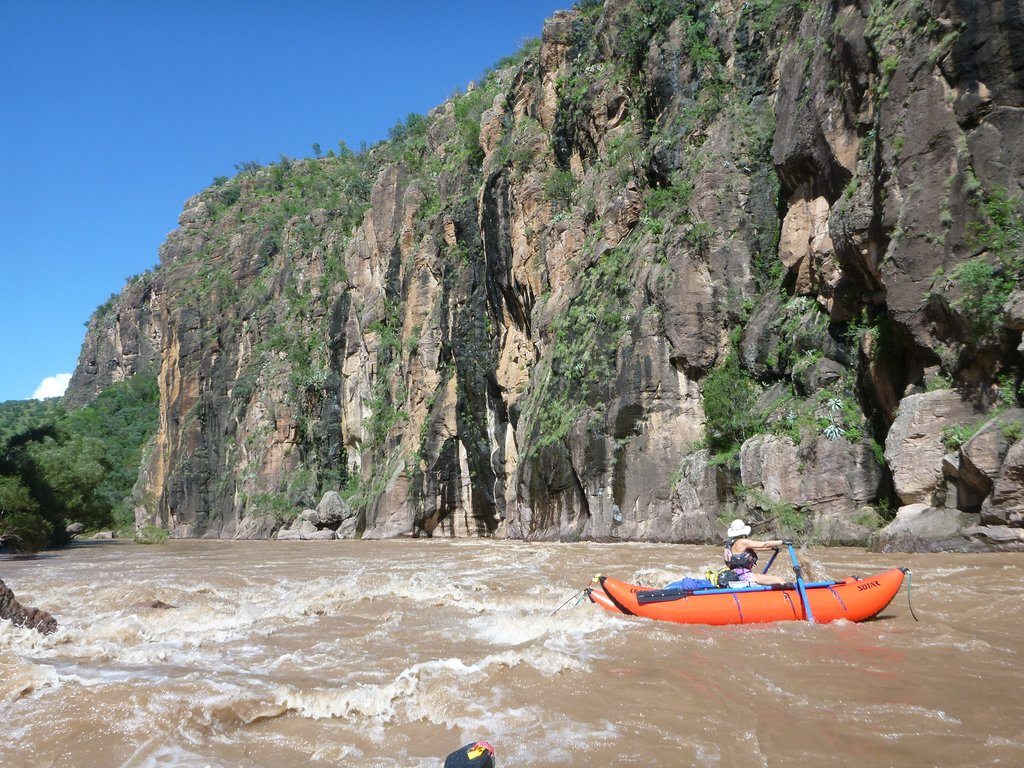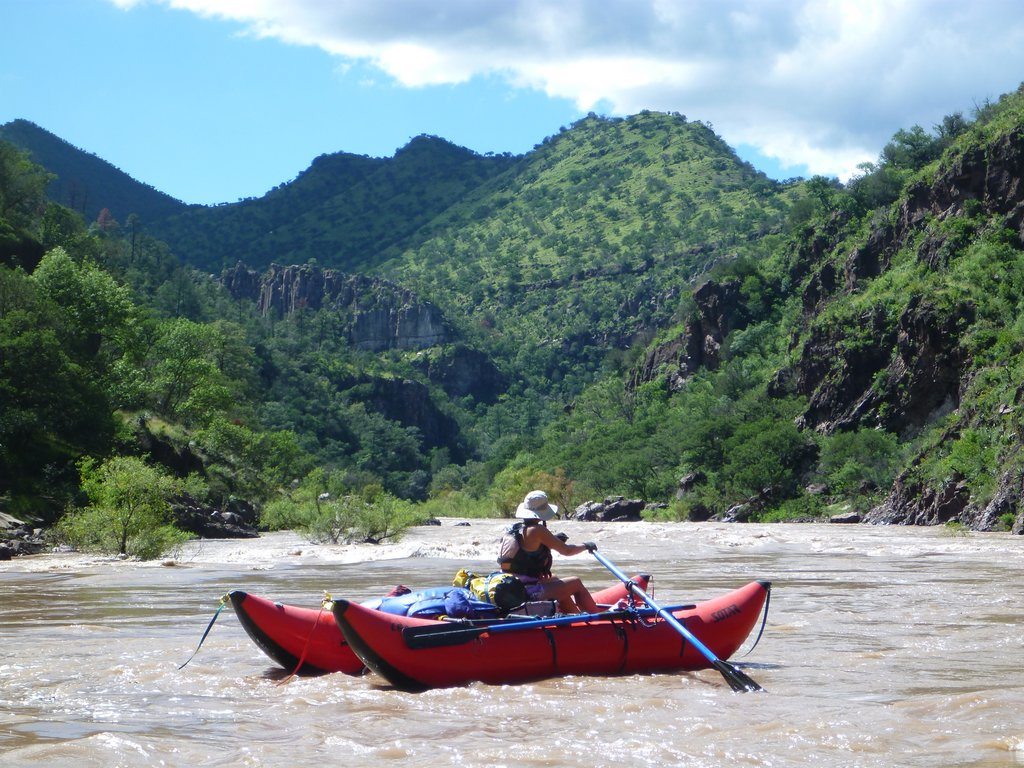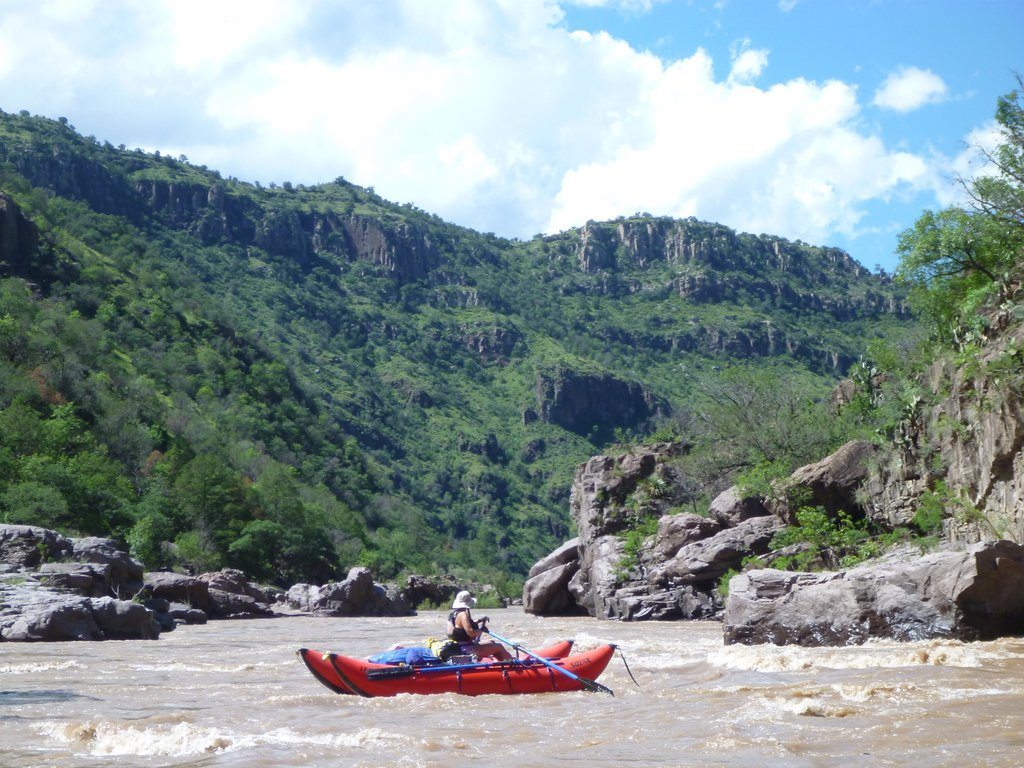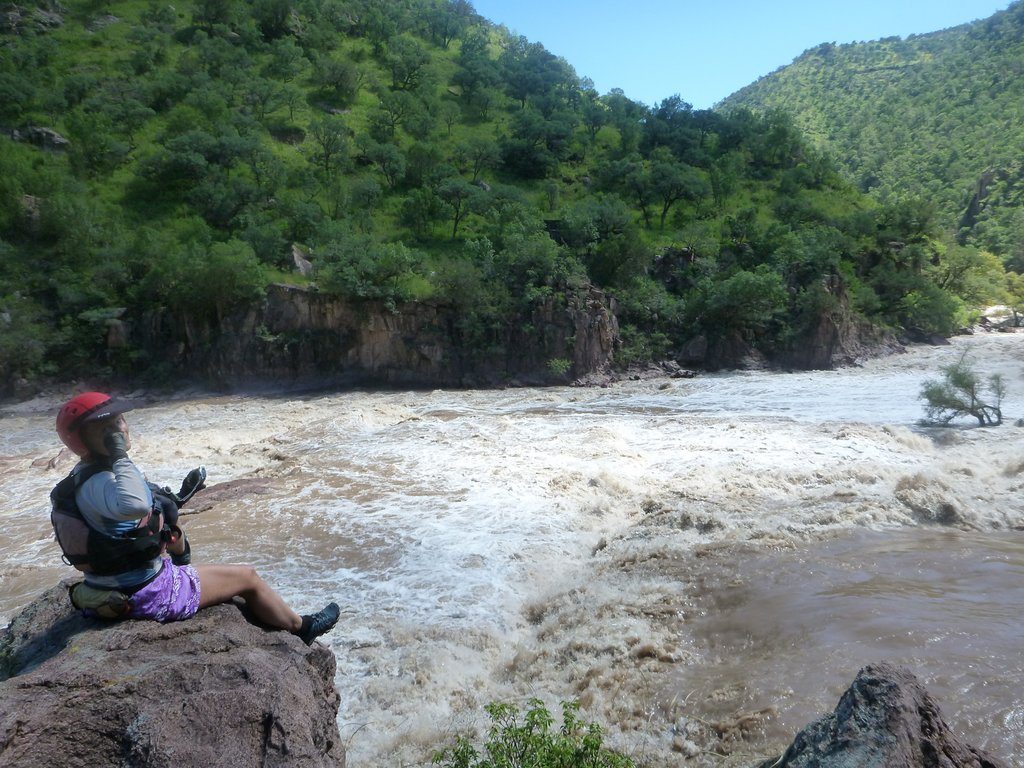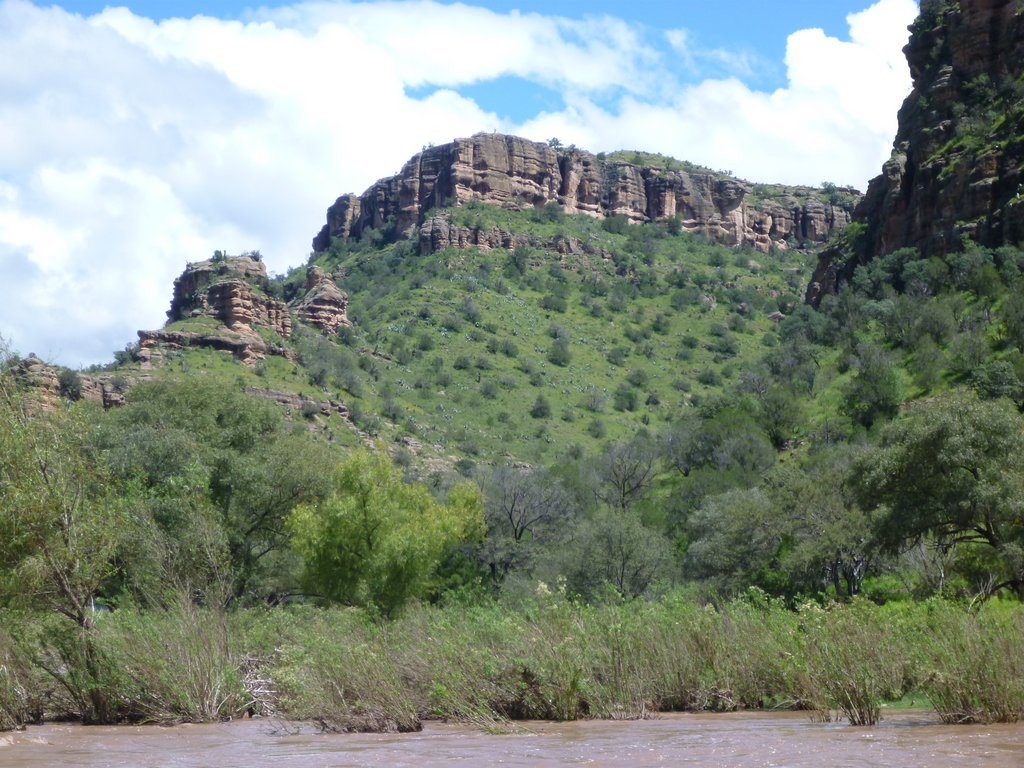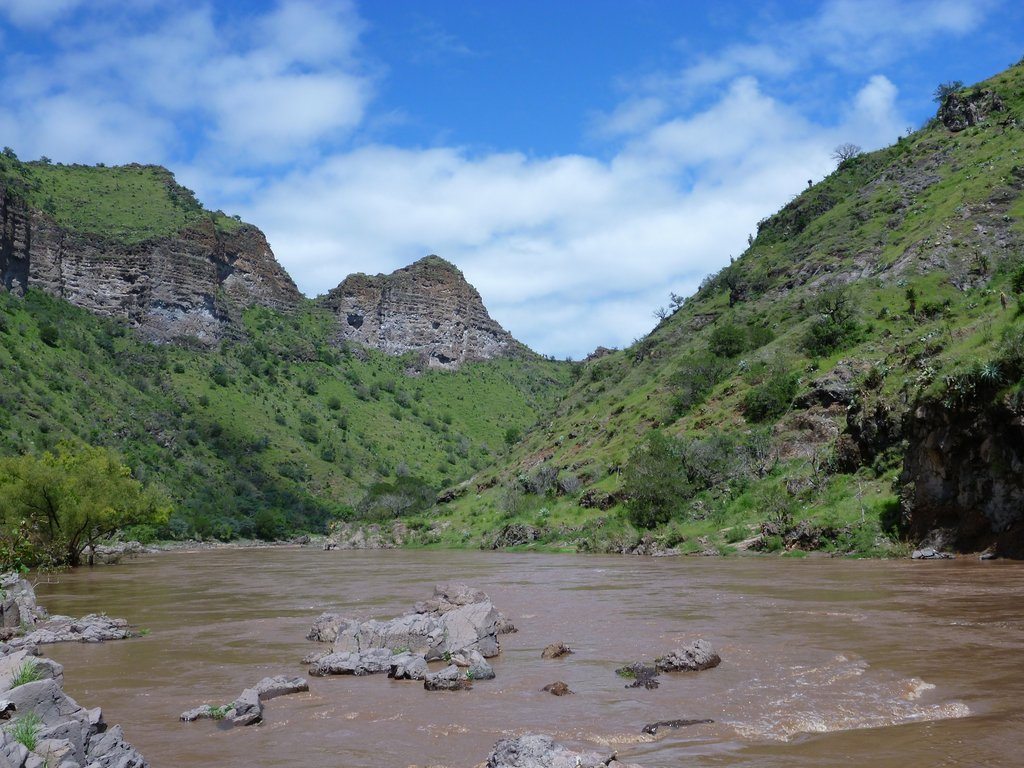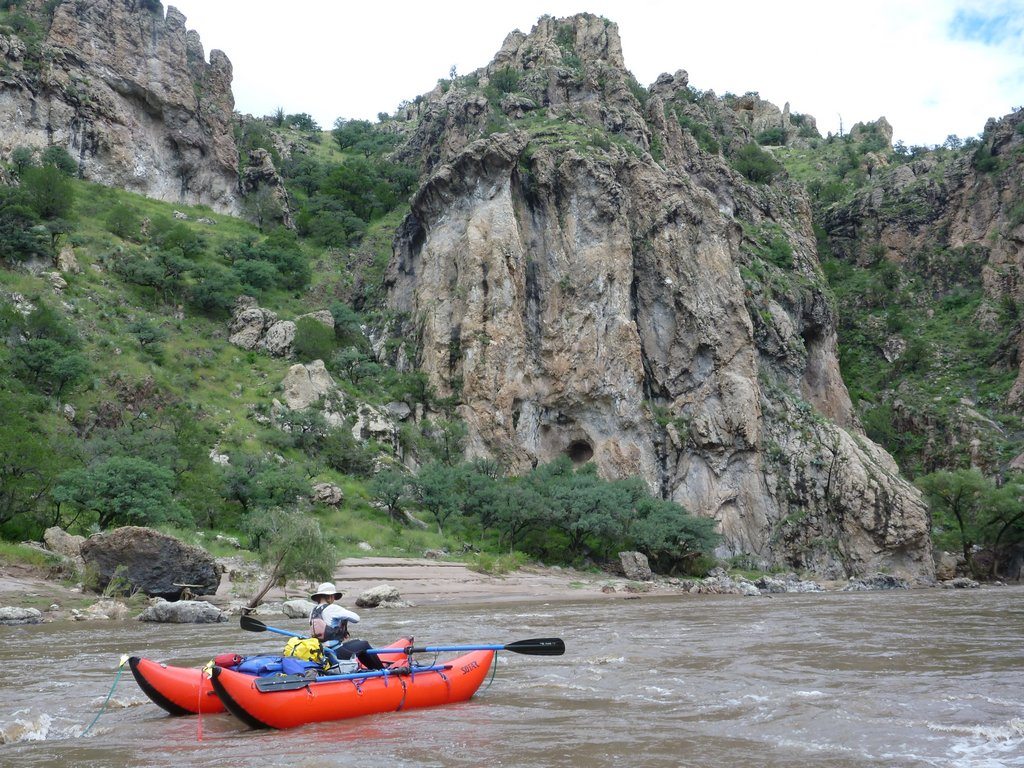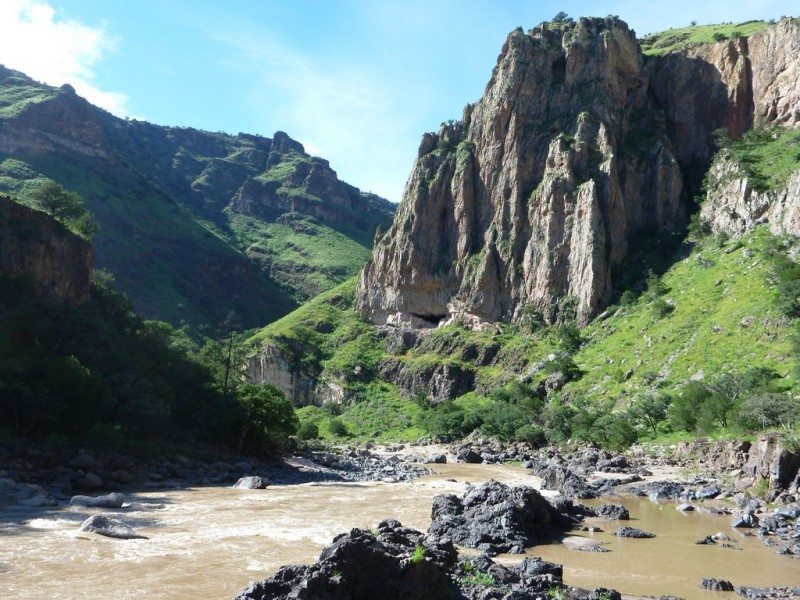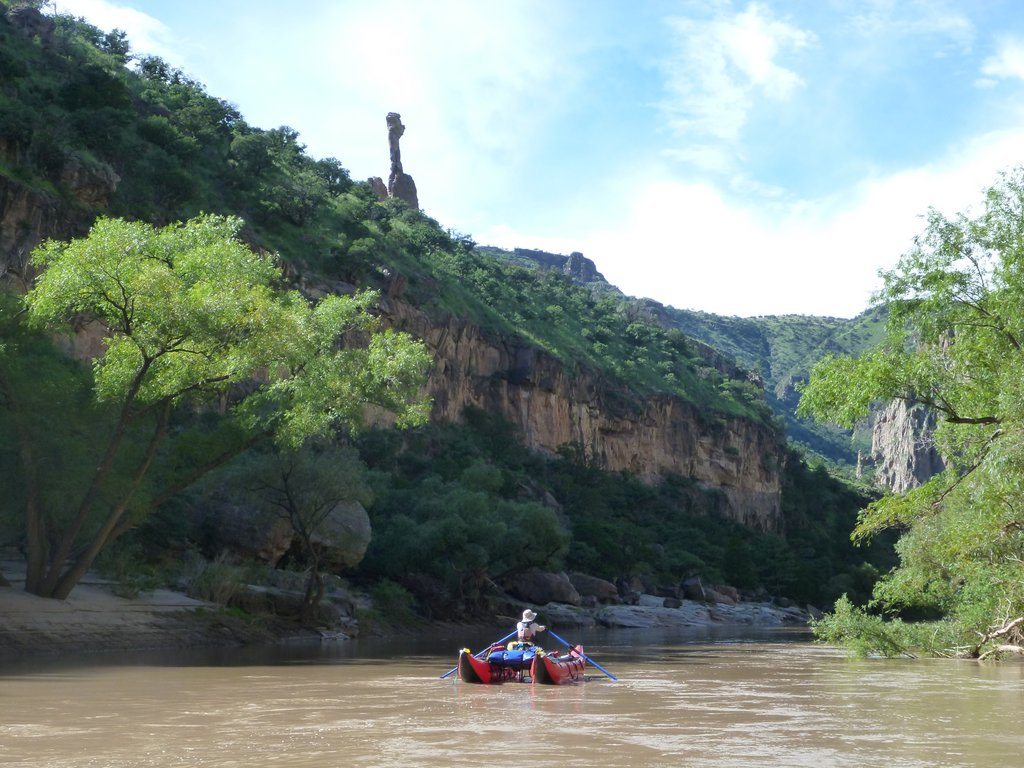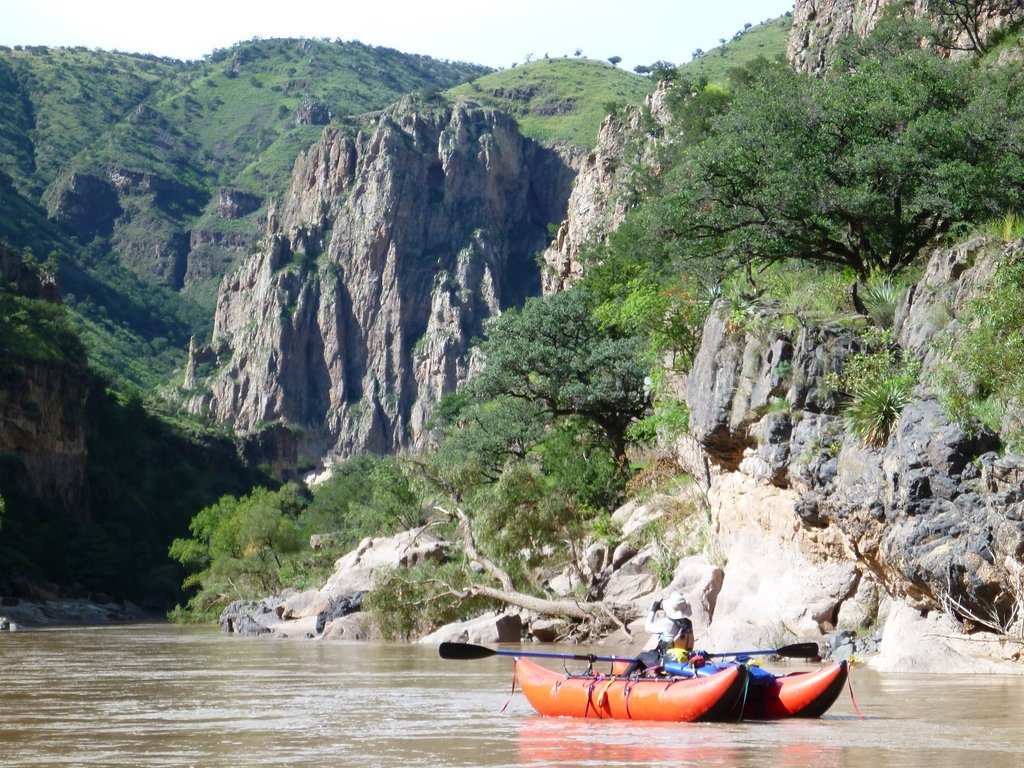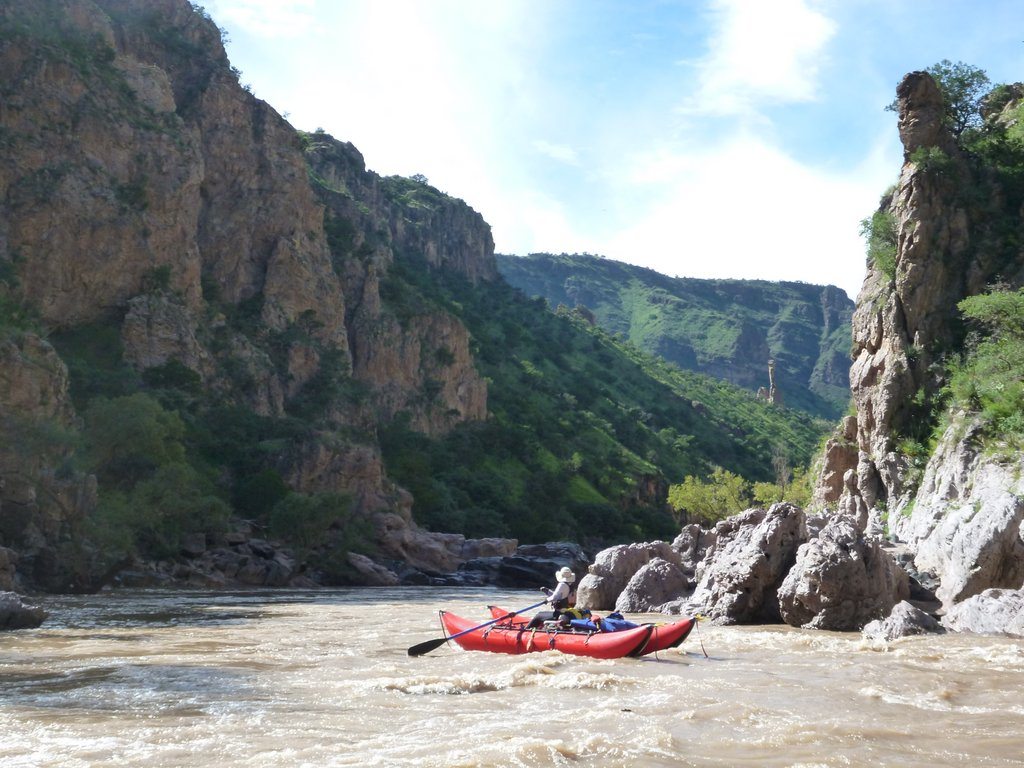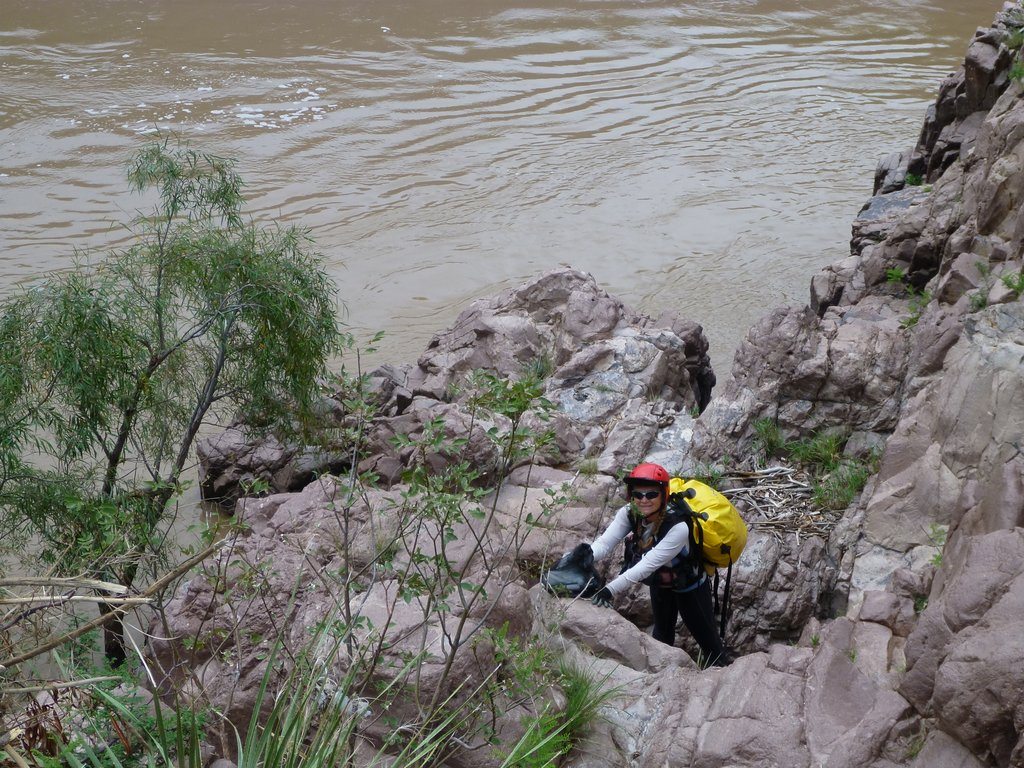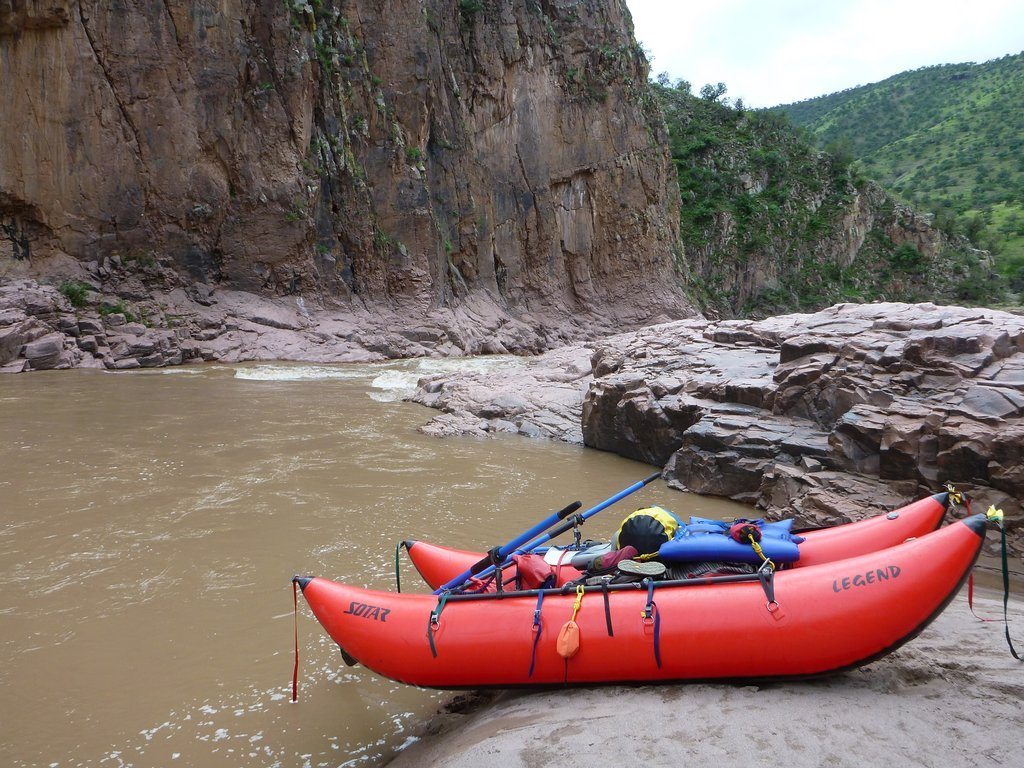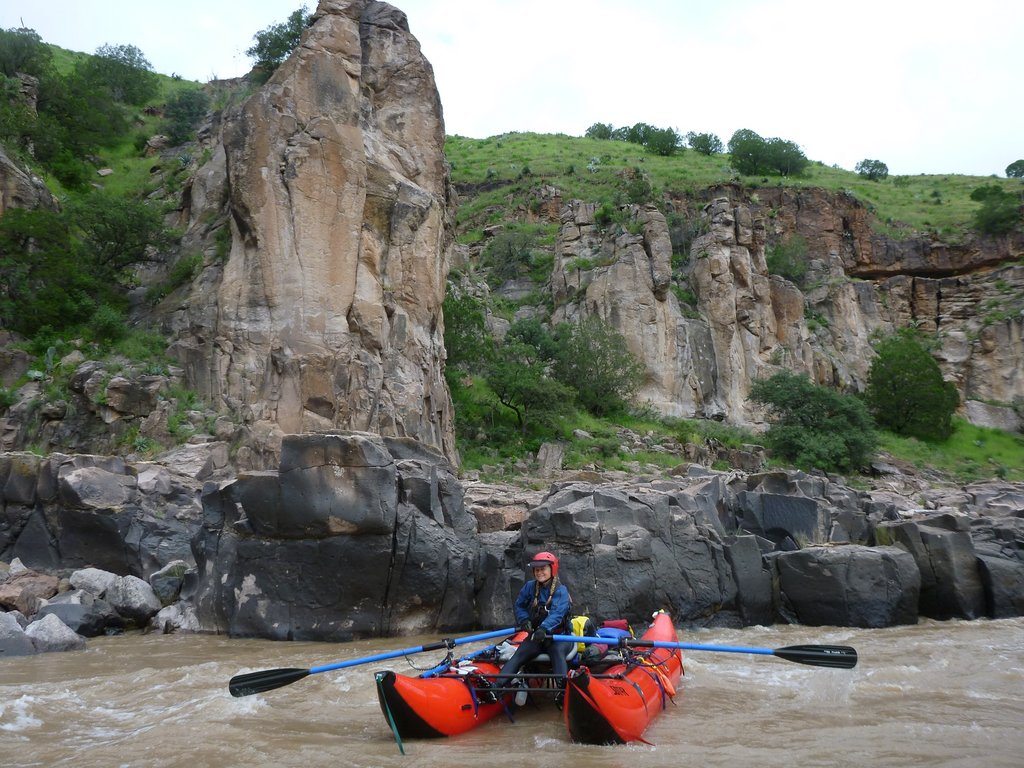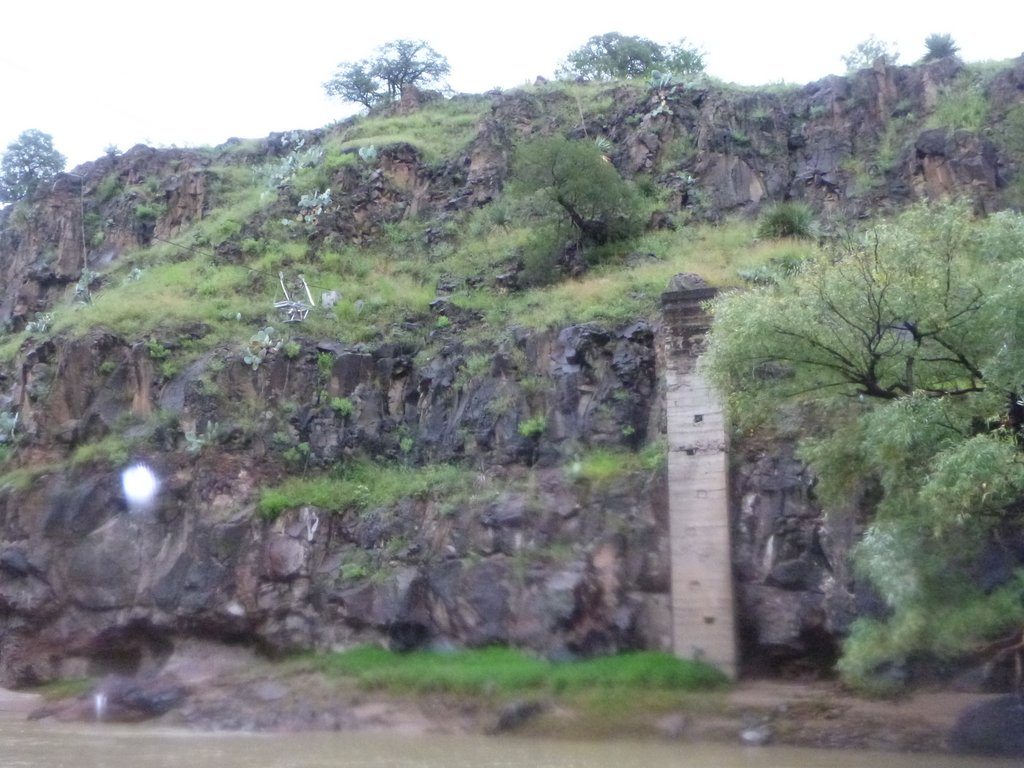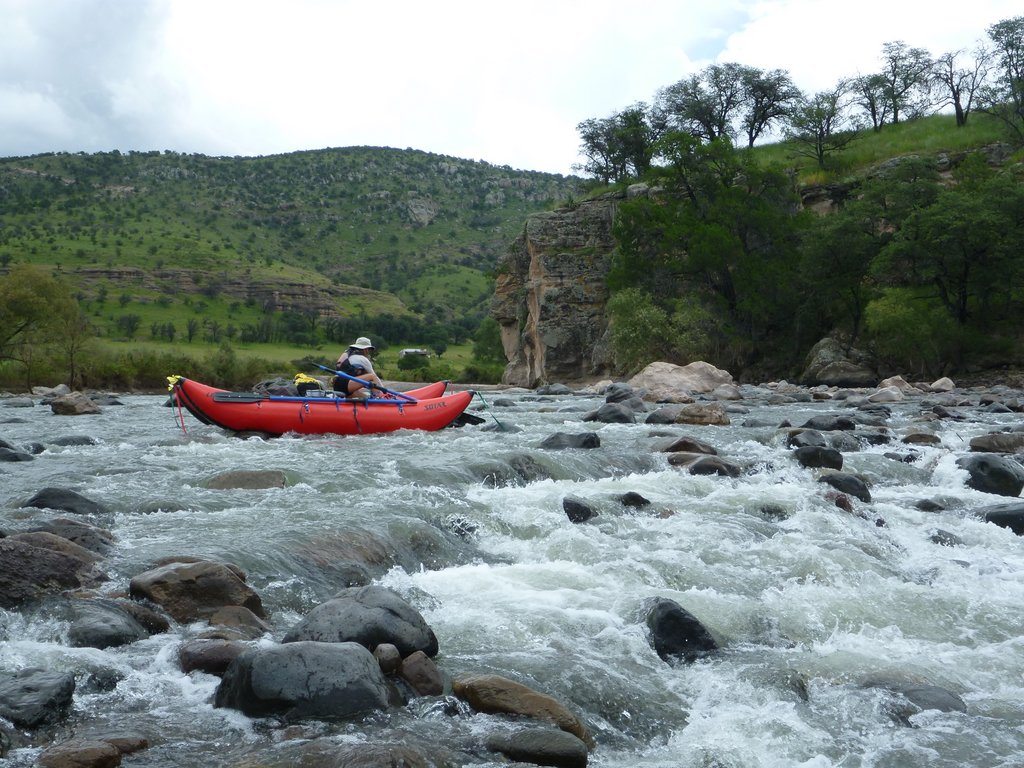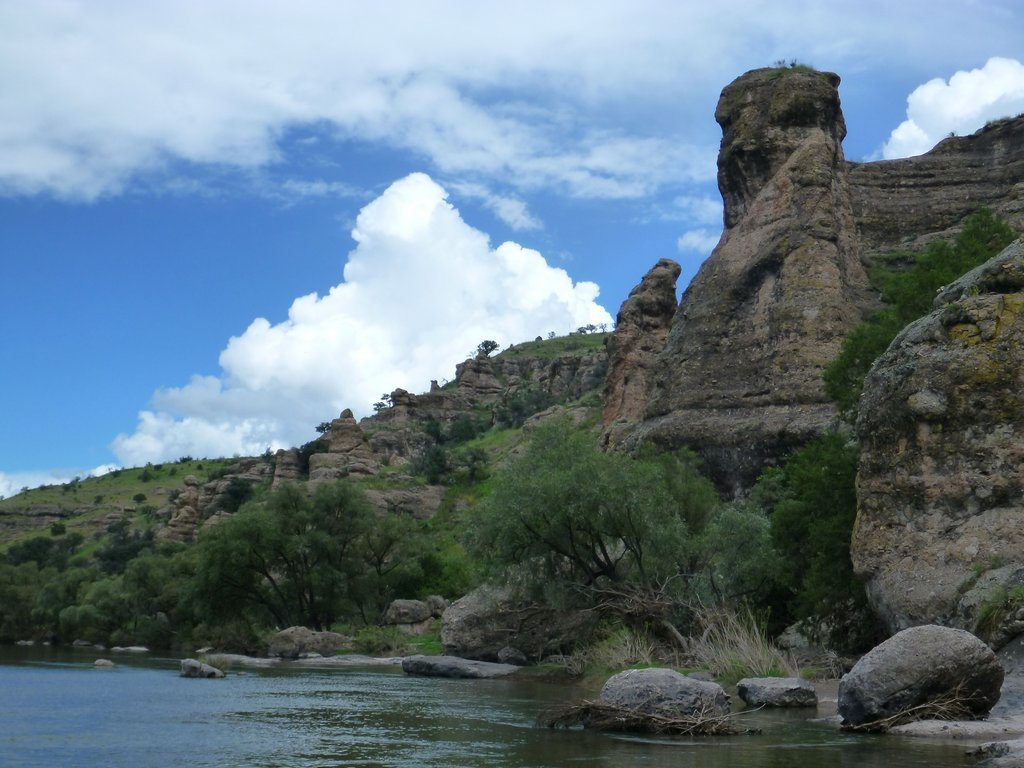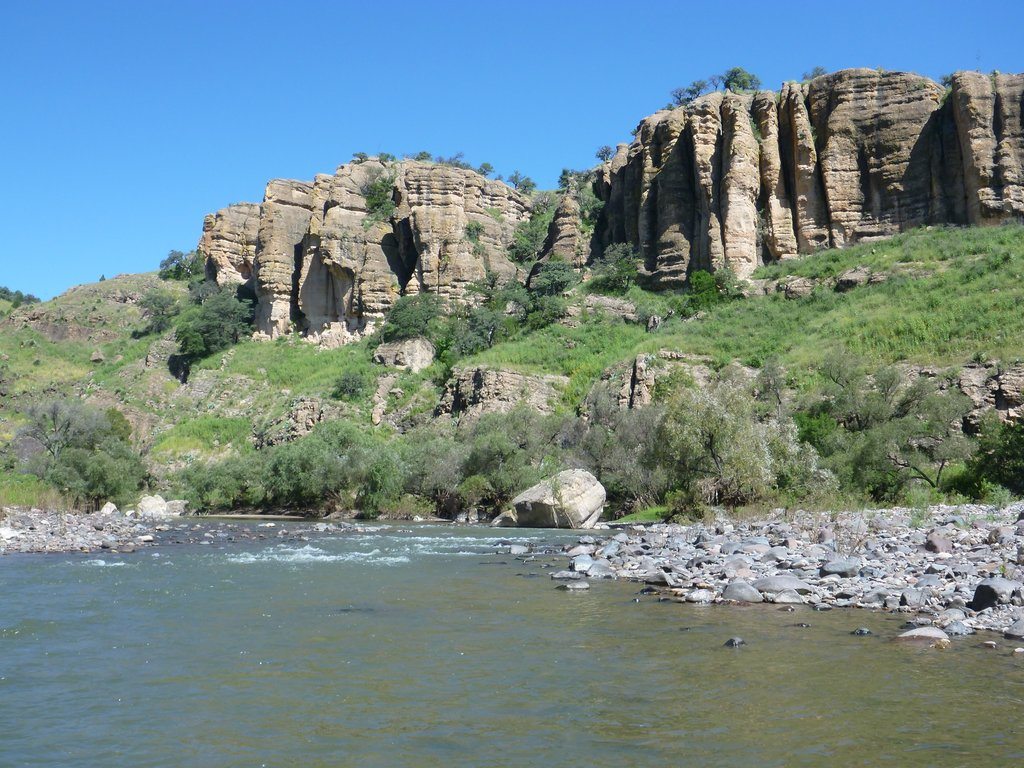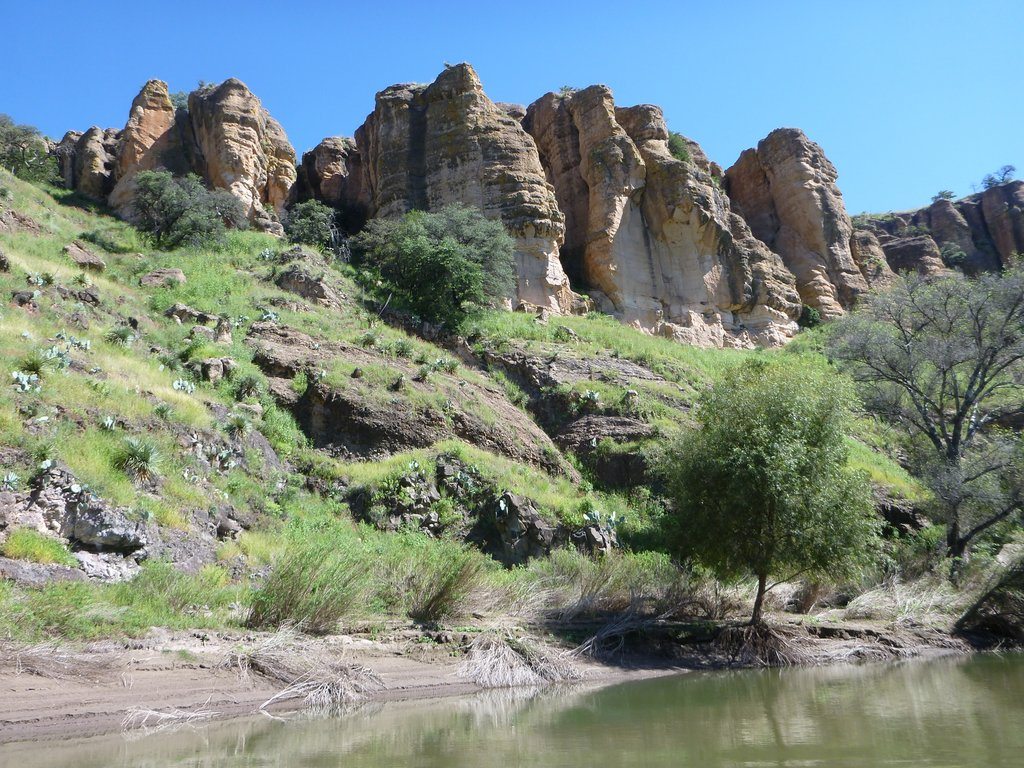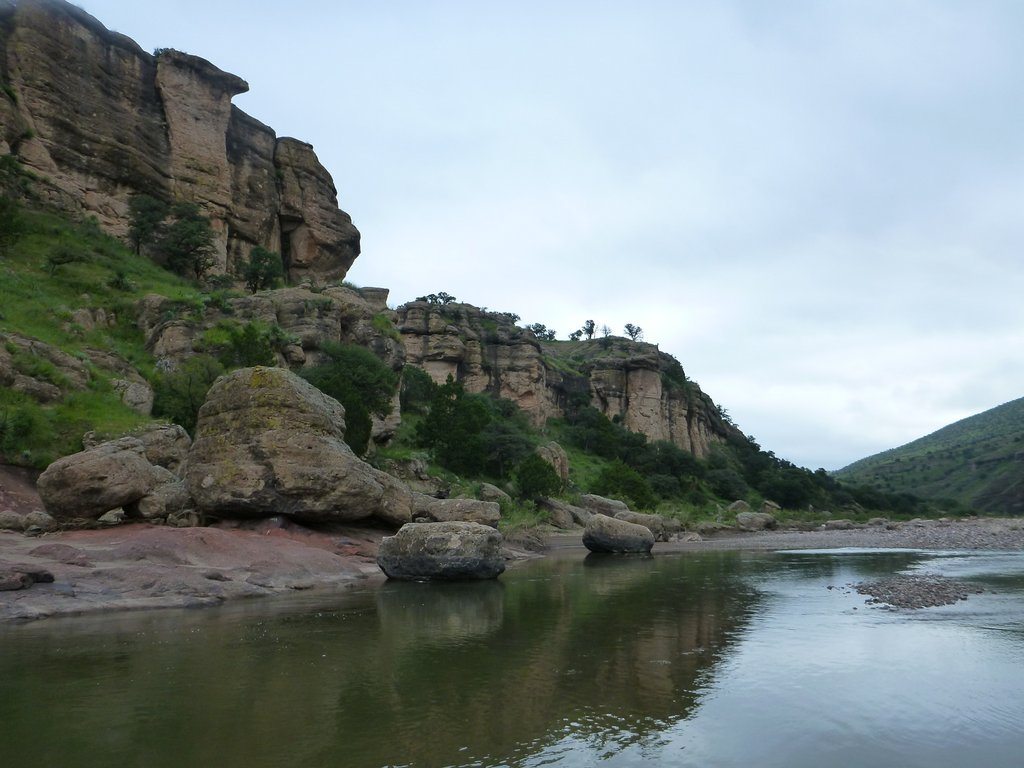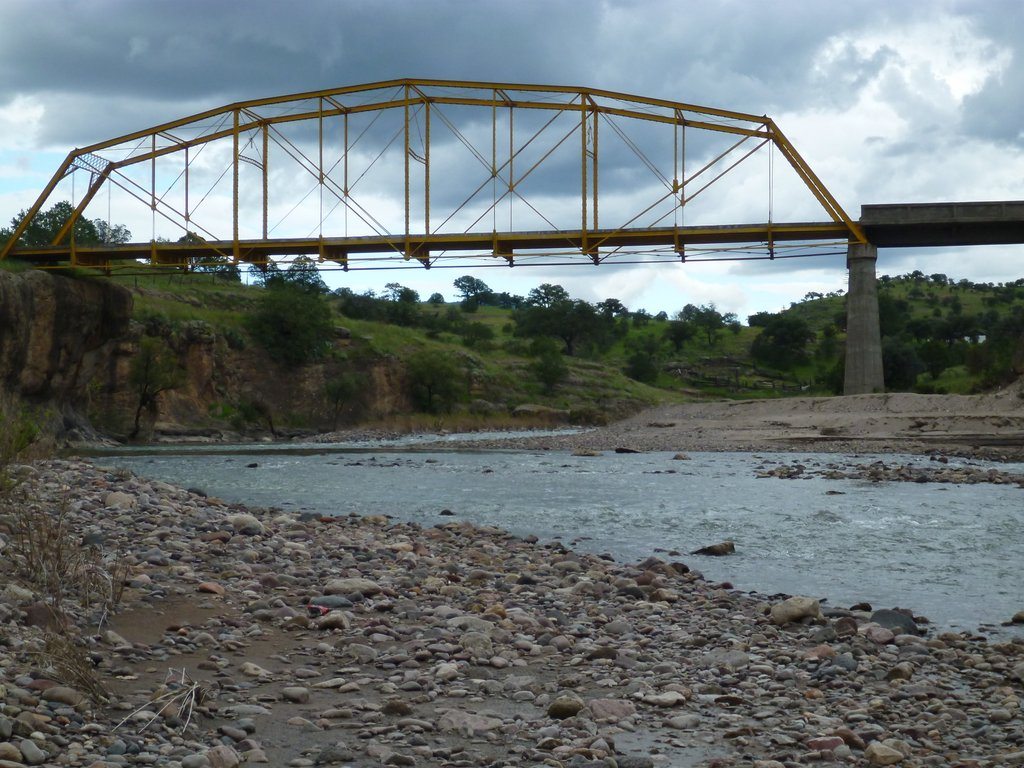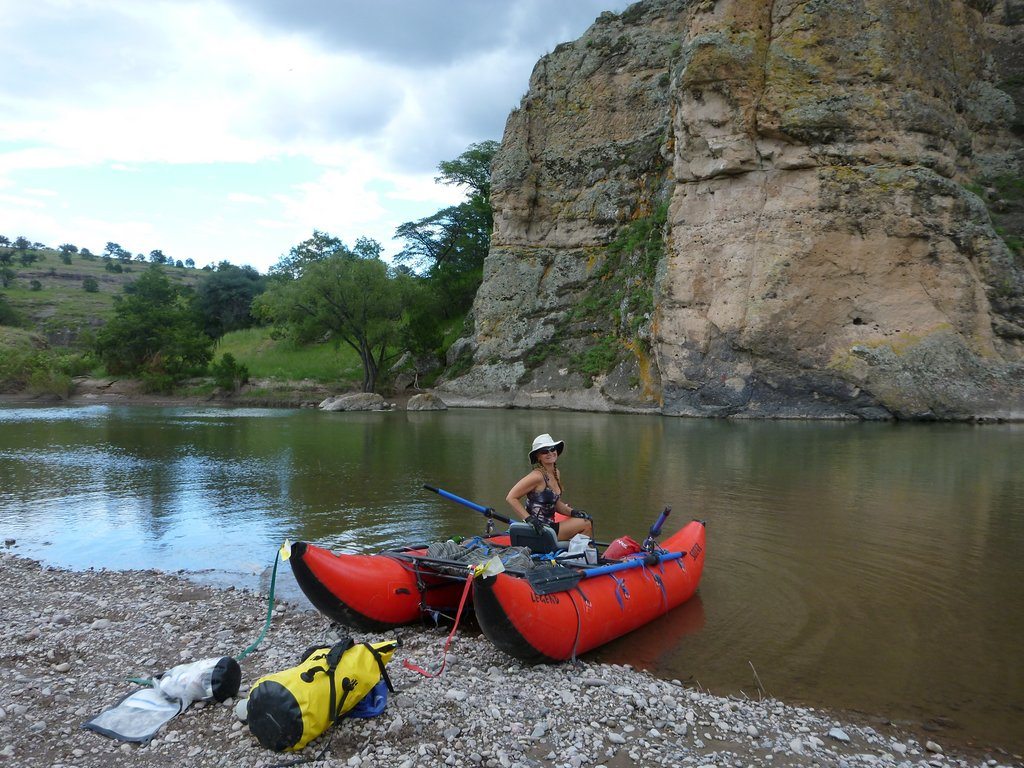We have several trips planned for 2025/2026 and are looking for like-minded, adventurous people to join us!
ECUADOR is a boater’s paradise. We look forward to returning every year. We have rowed many of the rivers in Ecuador and are again offering fully escorted trips in 2025/2026 where we handle all of the logistics, along with some of our Ecuadoran friends; join us on a shared adventure! This year’s trips are scheduled for December through March, during the drier season so the water is generally lower and the weather warmer (although March can have some bigger water). Bring your own boat or rent a cataraft from us. We can help you book a trip even if we are not going to be there. Our Ecuadorian friends at Kayak Ecuador and Pacha Eco Lodge will take great care of you! See tabs below for details.
Depending on the level of interest, we may lead some “escorted” trips to northern Mexico this year. Trips for more experienced boaters include the Rio Mulatos and upper Rio Sirupa. These are not commercial trips but we do charge for our expertise, organization, and logistical support. These trips are primarily for boaters that have their own equipment but for those who don’t have their own light weight boats, a few rentals may be available including one or more fully rigged catarafts. If you are interested in a joining one of these trips, contact us and we’ll see what we can put together for your group. My Floater’s Guide to the Rivers of the Yaqui Watershed (Mexico) is now available in print form or as an e-book. Click here or the “Books” tab on the main menu.
Click on the tabs below for more information on our trips for 2025/2026
ECUADOR - Boating Paradise
Ecuador
December 2025 and January/February/March 2026 – Escorted
ECUADOR is a boater’s paradise! This South American country is relatively easy to get to with a variety of airlines providing service into Quito and Guayaquil. Lodging and food are very affordable. Transport is easy. Money is a no-brainer, everything is in U.S. Dollars! And the rivers? Fantastic! Everything from placid jungle floats to Class V+ kayak-only runs. For rafters, catarafters, packrafters, inflatable kayakers, and hardshell kayakers looking for whitewater, there is a wide variety of runs in several parts of the country ranging from big-water Class III to creeky Class IV+, and stomping big-water Class IV+. We look forward to returning every year.
These are small-group (8 people max) trips for people that bring their own equipment down with them and include transport from the airport in Quito. Our Ecuadorian friends handle all of the logistics, lodging, food, and shuttles. You will be responsible for bringing your own equipment (cataraft, raft, paddle cat, IK, or kayak) and personal gear (PFD, helmet, skirt, paddle). Rafts, inflatable kayaks and kayaks are available to rent locally at additional cost if you cannot bring your own equipment. We generally have at least one cataraft package available for rent in Tena.
Check out our 7 Day/6 night Class III+ Intermediate Itinerary HERE
Check out our 7 Day/6 night Class IV/IV+ Advanced Itinerary HERE
Looking for an even longer trip, we can help with that too, just contact us well ahead of time to make the arrangements!
You make all the flight arrangements and get your boating equipment down to Quito and we’ll do the rest. Not sure that you can travel with your equipment? YES you can! If you don’t have a light boat, purchase one of our “International Travel” cataraft packages. These are the same boats we have been taking down to Ecuador since 2016 and they work great. There are rafts, catarafts, inflatable kayaks, paddle cats, and kayaks available to rent at reasonable prices too. Looking for a commercial rafting trip, kayak instruction, or swiftwater rescue training? We have friends that offer these services too.
We have rowed many of the rivers in Ecuador, and in 2024/2025 we may explore some new ones, join us in the shared adventure! Here are some of the rivers we have run in Ecuador. The descriptions are my impressions from running them in prior years, often at different water levels (see the Trip Reports page). Check out some videos from Jan/Feb 2021 on my YouTube channel.
Tena Area
- Rio Tena – upper is steep, technical Class IV/IV+ creeking, lower is Class II
- Rio Hollin overnighter – technical Class IV creeky feel with two portages, transitioning to big-water Class III+/IV
- Rio Jondachi (lower) – technical Class III+ into the larger volume Hollin (III+/IV)
- Rio Jondachi (middle) – tight, technical Class IV/IV+ with a larger creeky feel
- Rio Jatanyacu – wide open big-water Class II+/III, a bit more technical at low water
- Rio Misahualli (upper) – tight, technical Class III+ to IV+ creeking
- Rio Misahualli (middle) – open Class II small river
- Rio Anzu (middle) – technical Class III+ to begin, tapers to more open Class II to III
- Rio Anzu (lower) – wide open Class II+ tapers to Class II and then flatwater
- Rio Piatua (upper) – tight, technical Class IV at lower water, full-on Class IV+ at high water
- Rio Piatua (lower) – a bit more open Class III+/IV, flows into the Middle Anzu
- Rio Arajuno – mellow jungle float
Baeza Area
- Rio Quijos – the upper sections are more creek like; the lower sections are more open and bigger water. The popular Canyon to Canyon run is Class III with a couple of Class IV rapids.
- Rio Oyacachi – tight, rocky Class IV+ creeking at low water
- Rio Cosanga – I still want to run this Class IV tributary to the Quijos
Santo Domingo Area
- Rio Toachi – big volume Class III-IV (IV+ at high water)
- Rio Blanco – big volume Class III-IV (technical at low water)
- Rio Mulaute – beautiful Class III/III+ creeking at lower water
- Rio Pachijal – beautiful Class III creeking (technical!)
Macas Area
- Rio Upano – high volume Class III+ to IV+ (day trips or multi-day)
- Rio Yukipa – beautiful Class III-III+ jungle river
- Rio Tutanangoza – Class III middle canyon, Class III-IV lower canyon
- Rio Tuna-Chiguaza – gorgeous limestone canyon in the jungle; class III with class VI consequences, a portage or two, and possibility of wood
We’re hoping to explore some different rivers around the country as well.
- Tena/Archidona
- Rio Pano
- Rio Anzu (upper)
- Rio Inchillaqui
- Rio Illoculin
- Santo Domingo
- Rio Otongo
- Crystal Grande
- Upper Toachi
- Rio Baba
- And MORE!
- Aguarico Valley
- Rio Chingual
- Rio Aguarico
- Rio Due
- Pastaza Valley
- Upper and lower Pastaza
- Rio Palora
- Macas Area
- Namangoza Gorge (Rio Upano)
- Rio Paute
- Rio Negro
- Rio Seipa
- Rio Jurambaino
- Rio Cuyes
- Rio Gualaquiza
- Southern Area
- Rio Jubones
MEXICO - Rio Sirupa
Rio Verde / Sirupa
Aug-Sept – 73 miles 8 or 9-day Escorted Trip Shared Shuttle
Experience a section of the Rio Verde, then continue downstream on the little known Rio Sirupa. The Verde is one of the headwater streams in the Yaqui drainage north of the famous Copper Canyon region in Chihuahua, Mexico. Neil and Lacey ran from Puente Verde outside of Matachic to the hot springs at Huapoca in 2013. The Rio Verde down to the confluence with the Rio Papagochic will likely be low and creeky Class II to III while the section of the Rio Sirupa below contains several Class IV rapids and probably 2 portages before reaching Cascada Sirupa. Cascada Sirupa may be anywhere from Class III to VI depending on flow and we may have to portage. This is an extremely beautiful desert canyon. Below Cascada Sirupa is mostly big water Class III. The hot springs at Huapoca are a fabulous way to end the trip.
Neil and Lacey have boated this section before and can help experienced boaters down this difficult stretch of river. Participants need to have solid Class IV boating experience, desert camping experience, have their own boating equipment, and be willing to portage in at least two spots. We may have a cataraft package for rent (at additional cost) if you cannot transport your own equipment down to Mexico. The trip cost of will cover Lacey and/or Neil to arrange shuttle, purchase food, and serve as leader(s) for the trip. In addition, participants will be responsible for their share of the shuttle and the food costs. We anticipate that total cost per participant will be on the order of $900 to $1000 if they supply their own boat. Participants should plan on bringing an additional $200 or so for incidentals such as food on the drive from and back to the border, and hotels before and after the trip.
Note: depending on the group size, experience, and vehicles, participants may be required to drive their own vehicles in Mexico. These added expenses for fuel and insurance are NOT included in the trip cost or group shared expenses.
Trip Highlights:
- Experience a river that few have ever seen – there have been only a few known descents of this section, although day trips out of Madera to a section just above the hot springs used to be run by local outfitters.
- Amazing Scenery – see for yourself the incredibly beautiful canyons carved by the rivers of northern Mexico.
- Swim in the thermally heated pools or enjoy the shower at Aguas Termales Huapoca.
- Visit archaeological sites in the area after the trip!


